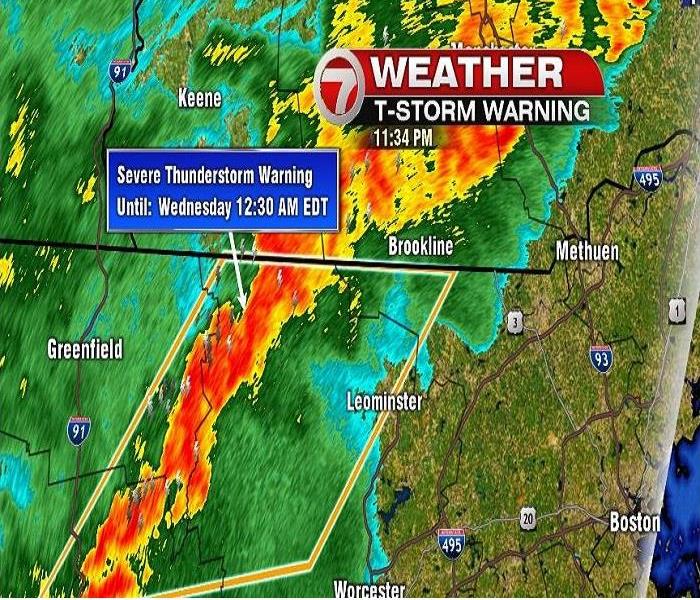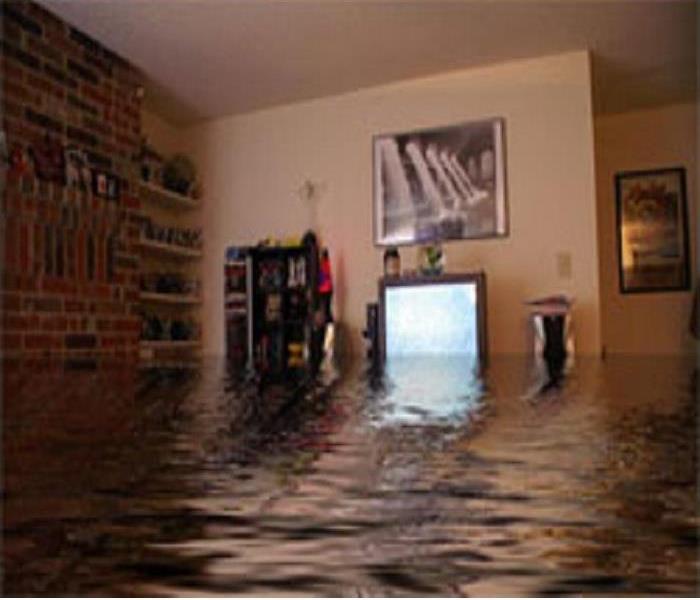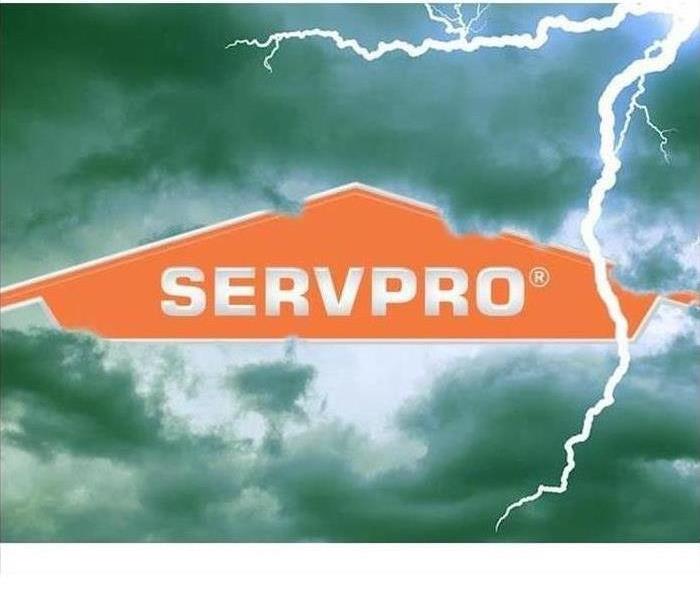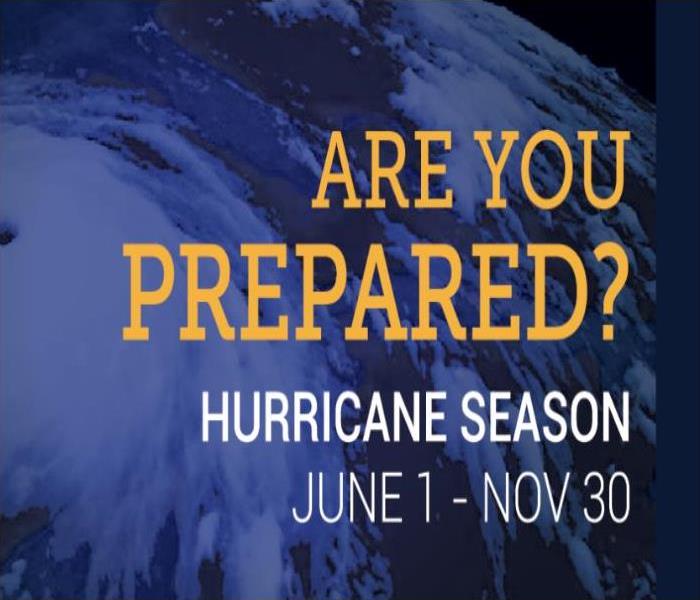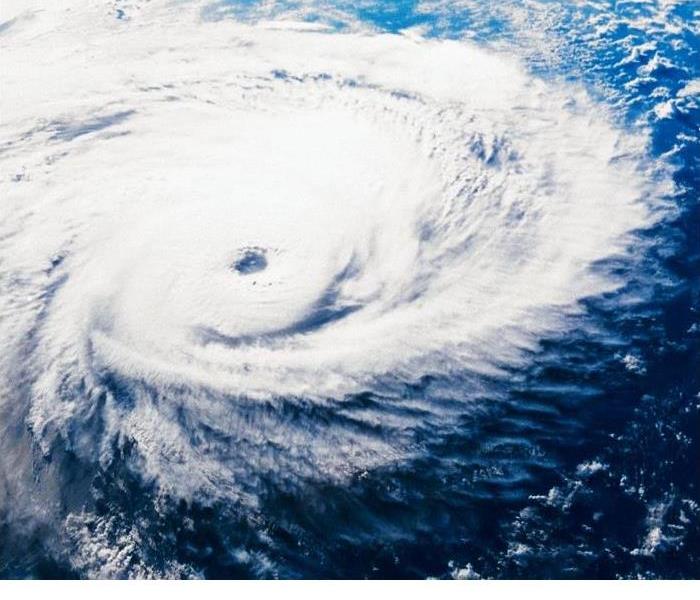Archived Storm Damage Blog Posts
SERVPRO's Swift Response to Iowa Floods
7/8/2024 (Permalink)
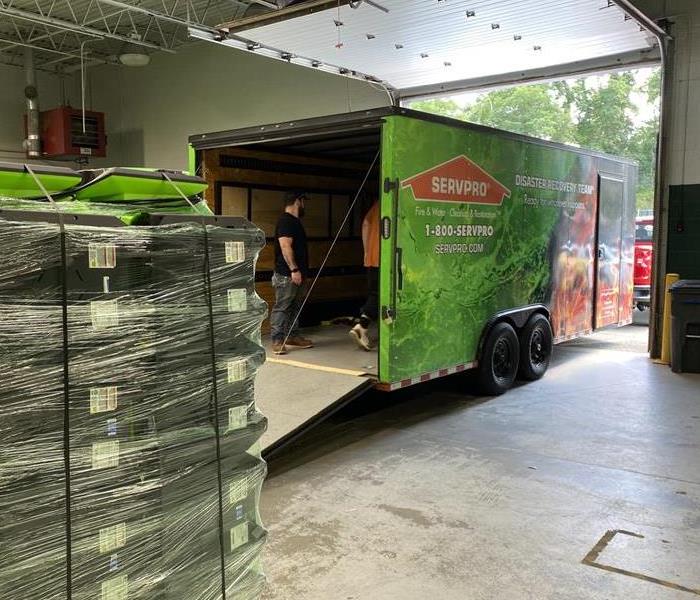 As a locally owned and operated franchise, SERVPRO is deeply committed to supporting our community in times of crisis
As a locally owned and operated franchise, SERVPRO is deeply committed to supporting our community in times of crisis
At SERVPRO®, we understand that natural disasters can strike unexpectedly, leaving communities vulnerable and in urgent need of assistance. Last week, Iowa experienced severe flooding that impacted numerous homes and businesses across the region. As a trusted leader in disaster recovery and restoration services, SERVPRO was quick to mobilize our resources and expertise to aid those affected by the floods.
Immediate Action
When disaster struck, our dedicated team immediately deployed to the affected areas in Iowa. Our priority was to provide rapid response and relief to homeowners, business owners, and communities grappling with the aftermath of the flooding. We understand the importance of acting swiftly to mitigate damages and begin the restoration process promptly.
Comprehensive Restoration Services
SERVPRO's storm response team brings unparalleled experience and proficiency in handling flood-related damages:
- Water Extraction and Drying: Utilizing advanced equipment to extract standing water and thoroughly dry affected areas to prevent further damage and mold growth.
- Debris Removal and Cleanup: Safely removing debris and contaminants to restore properties to pre-flood conditions.
- Structural Restoration: Repairing structural damage and rebuilding affected areas to ensure safety and functionality.
- Contents Cleaning: Cleaning and restoring personal belongings and valuable items affected by floodwaters.
Commitment to Community
As a locally owned and operated franchise, SERVPRO is deeply committed to supporting our community in times of crisis. We work closely with local authorities, insurance companies, and homeowners to streamline the restoration process and provide peace of mind during challenging times.
Why Choose SERVPRO?
- 24/7 Emergency Response: Our team is available around the clock, ready to respond to emergencies whenever they occur.
- Certified Technicians: Trained and certified in the latest restoration techniques to deliver superior results.
- Industry-Leading Equipment: State-of-the-art technology and equipment ensure efficient and effective restoration services.
- Insurance Coordination: We assist with insurance claims and documentation to facilitate a smoother recovery process for our customers.
Partner with SERVPRO Today
If your property has been affected by the recent floods in Iowa, don’t hesitate to contact SERVPRO for immediate assistance. Our experienced team is here to help you navigate through the restoration process and restore your property to its preloss condition. Visit our website or call us today to learn more about our storm response services and how we can assist you during this challenging time.
Contact Information:
- Phone: 978 744 4545
- Email: theenan@SERVPROsalem.com
- Website: SERVPROlynnlynnfield.com
At SERVPRO, we're more than a restoration company—we're your trusted partner in disaster recovery. Let us help you rebuild and restore after the storm.
Unleashing the Power of SERVPRO® Drying Equipment: Empowering Large Loss Capabilities for Storm Relief
5/20/2024 (Permalink)
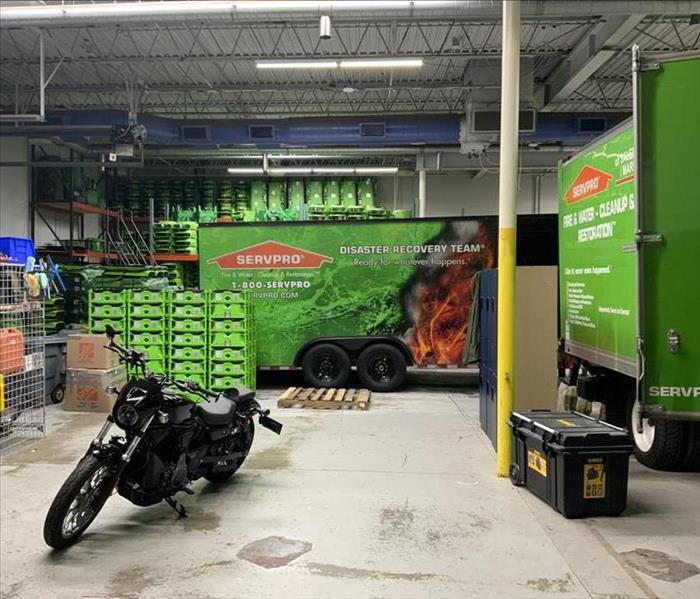 While some may shy away from tackling monumental disasters, SERVPRO thrives on the challenge.
While some may shy away from tackling monumental disasters, SERVPRO thrives on the challenge.
In times of crisis, when storms rage and disasters strike, SERVPRO® stands as a beacon of hope and restoration. Our commitment to excellence in disaster recovery extends far beyond mere words—it’s ingrained in every aspect of our operations, especially in our drying equipment and large loss capabilities. Let’s delve into how these crucial elements empower us to provide swift, efficient, and reliable storm travel services.
Cutting-Edge Drying Equipment:
At the heart of our storm recovery arsenal lies state-of-the-art drying equipment, meticulously designed to tackle the most challenging of conditions. From powerful air movers to high-capacity dehumidifiers, our machinery is engineered to expedite the drying process while maintaining optimal safety standards.
Air Movers: Our industrial-grade air movers swiftly circulate air within affected areas, accelerating evaporation and moisture removal. These robust machines are strategically positioned to maximize airflow and minimize drying times, essential for mitigating further damage.
Dehumidifiers: Designed to extract moisture from the air, our range of dehumidifiers is unparalleled in efficiency and capacity. Whether dealing with a small-scale incident or a large-scale catastrophe, these units work tirelessly to restore humidity levels to preloss conditions, preventing secondary issues like mold growth.
Specialized Equipment: In addition to our core drying machinery, SERVPRO boasts a diverse array of specialized equipment tailored to address unique challenges. From thermal imaging cameras for pinpointing hidden moisture pockets to moisture meters for precise readings, we leave no stone unturned in our quest for thorough restoration.
Large Loss Capabilities:
While some may shy away from tackling monumental disasters, SERVPRO thrives on the challenge. Our extensive resources, seasoned expertise, and unwavering dedication enable us to handle large-scale losses with unparalleled efficiency and effectiveness.
Rapid Response Teams: When disaster strikes, time is of the essence. That’s why SERVPRO maintains rapid response teams poised for immediate deployment at a moment’s notice. Our agile crews, equipped with advanced training and cutting-edge equipment, swiftly mobilize to storm-affected regions, ensuring timely intervention and minimizing downtime.
Scalable Solutions: From single-family homes to sprawling commercial complexes, SERVPRO’s large loss capabilities scale seamlessly to meet the unique demands of any scenario. Whether it’s coordinating multifaceted restoration efforts or orchestrating complex logistics, our team excels in delivering comprehensive solutions tailored to each client’s needs.
Collaborative Network: As a part of the SERVPRO family, our franchisees benefit from a vast network of support and collaboration. In times of crisis, this interconnected ecosystem proves invaluable, enabling seamless resource allocation, knowledge sharing, and collective problem-solving on a regional, national, and even international scale.
In conclusion, SERVPRO’s drying equipment and large loss capabilities form the cornerstone of our storm travel services, enabling us to navigate the most daunting of challenges with confidence and competence. When disaster strikes, trust in SERVPRO to deliver swift, reliable, and compassionate restoration, because when it comes to storm recovery, we’re not just responders—we’re partners in resilience.
Safety Concerns with Flood Damage to East Lynn Basements
8/4/2022 (Permalink)
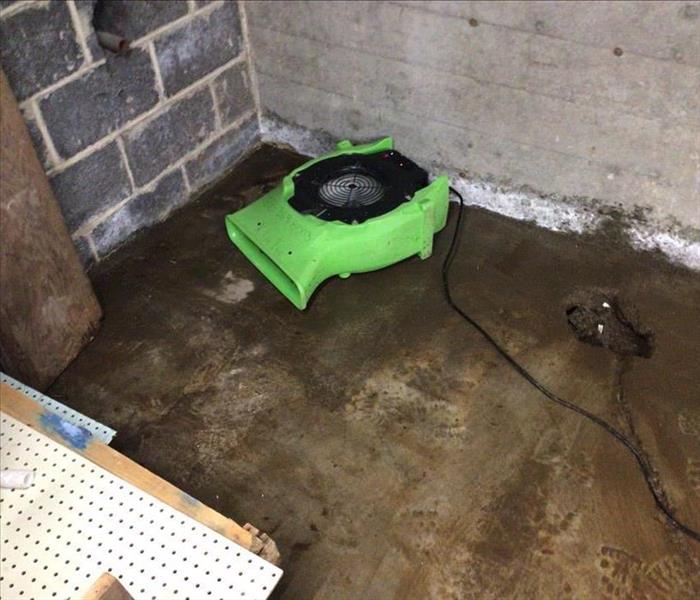 Having an issue with flood damage in your East Lynn home. Call SERVPRO for the help you need.
Having an issue with flood damage in your East Lynn home. Call SERVPRO for the help you need.
Cleaning Flood Damage with Safety Hazards
Despite being a fast responder to emergencies, careful considerations must be made into the kind of environment SERVPRO professionals are entering when restoring flood-damaged basements in East Lynn. Some of the safety concerns for our professionals can include:
- Structural weakness
- Shock hazards
- Infestation
- Contamination and
- Standing water
Damage to the House
Structural flood damage can be among the most destructive and compromising. The infiltration point for floodwater is one of these vulnerabilities, but excessive water exposure can also cause other building materials to collapse or sag.
Shock Hazards
Pooling water is an excellent conductor of electricity. In your finished basement, there are likely many outlets connected to the main power supply of the residence. Until the power is severed, SERVPRO professionals must often consider the likelihood of shock hazards.
The Possibility of Contamination
Contamination is also one of the pressing hazards in your flooded basement. Intruding water must get treated as a biohazard, making porous materials and contents in the damage path unsalvageable in most cases. We work quickly to get items out of harm's way and protect building materials through containment measures however possible. We use powerful disinfection cleaners and sanitizing agents to overcome bacterial and microbial threats.
Pooling Water and Mold Effects
Standing water is also a concern for restoration professionals, especially when considering debris and infestations that could result. Only certain extraction tools, including trash pumps and truck-mounted extractors, can be used when solids are in the standing water. Secondary effects like mold growth are likely without quickly resolving water removal needs.
After this disaster, several safety hazards from flood damage exist in your home's basement. Even if the water flow is stopped, our professionals must overcome several pressing concerns to help make it "Like it never even happened." Give our SERVPRO of Lynn / Lynnfield team a call today at (781) 593-6663.
Destructive Storms can Leave East Lynn Homes with Flood Damage
7/5/2022 (Permalink)
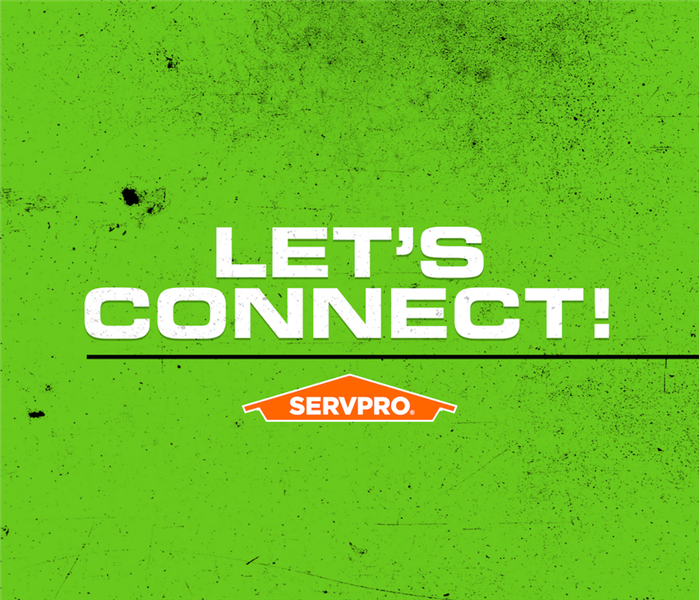 Storm damage restoration services by SERVPRO are second to none. We are ready at a moment's notice.
Storm damage restoration services by SERVPRO are second to none. We are ready at a moment's notice.
Act Fast to Lessen Flood Damage to East Lynn Homes
Storms that pass through East Lynn can easily cause flood damage to parts of your residence. Even if your neighborhood does not flood, lower levels of your property can find themselves underwater.
We act fast to decrease the severity of flood damage homes in East Lynn sustains. Letting water from flooding recede on its own can let microbes and other problems begin in earnest. Mold and mildew can grow as soon as 24 hours after cellulose-containing materials become wet. Flooding allowed to remain inside your home can also cause:
- Odors from microbial activity,
- Destroyed flooring, and
- Drastically elevated humidity.
Bad odors after flooding are expected. SERVPRO pumps water out when it is more than a few inches deep with a submersible pump. Lower levels can still cause aromas to develop, so we use handheld units to extract the water and make it so we can rinse hard surfaces with clean water and use disinfecting sprays. Desiccant machines also help make the home arider, decreasing the number of microbes.
Flooring of all types can succumb to flood damage. Wood rapidly warps, carpeting and padding retain contamination, and tiles can come loose and unglued. Our construction team can start working on these as soon as possible. While carpeting and padding cannot be saved due to contamination, we can salvage wood flooring and tile. Salvaging these materials helps us restore your home “Like it never even happened.”
Average, comfortable humidity inside your home makes the air easy to breathe. Reduced humidity also helps your home’s heating and cooling work with normal efforts. Extracting water is the first step toward correcting the humidity level.
Quick action is only possible when homeowners call us as soon as a problem arises. Flooding might affect only certain areas in your neighborhood. You need to take action quickly if you see rising water inside your home during a storm.
SERVPRO of Lynn / Lynnfield is always ready to send mitigation crews to your home. Call us at (781) 214-3705 for emergency services to protect your property.
Things to Remove when Flood Damage Affects a Lynn Home
5/4/2022 (Permalink)
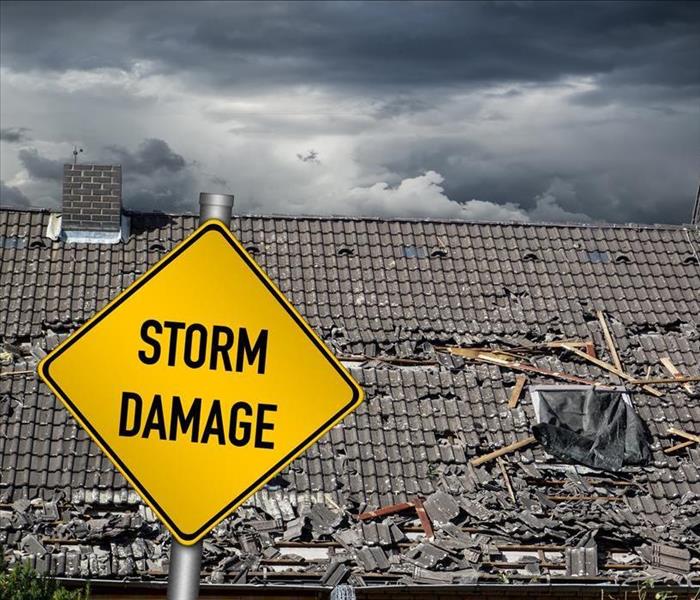 Flood damage restoration is no easy task. SERVPRO technicians are IICRC certified and have the experience and training you need.
Flood damage restoration is no easy task. SERVPRO technicians are IICRC certified and have the experience and training you need.
With SERVPRO, Flood Restoration Is Convent in Lynn
Accumulation of unwanted materials is a common outcome of flooding. Apart from the intruding water, silt, and mud, items inside the house also deteriorate, contributing additional unwanted substances. Removing all these materials is essential to resolve flood damage problems in Lynn homes.
Some materials are more susceptible to the flood damage at your Lynn home than others leading to irreversible changes. The changes could develop from physical deterioration, heavy soiling, or contamination. Several advantages accrue when you involve SERVPRO, including safer and faster removal of unwanted matter.
Contaminated materials needing immediate removal:
- Flood water
- Carpets and pads
- Silt or mud
- Drywall
Water accumulation is the main issue during a flooding incident, so it is essential to clear it from the property as quickly as possible. Floor materials such as carpets and pads are usually fully saturated, and unfortunately, cleaning them cannot eliminate all traces of contamination. Once floodwaters settle on surfaces, residues like silt and mud separate, so removal must factor in how to address such materials.
Appropriate Removal Procedures
A method can be deemed appropriate in facilitating flood removal if it meets or exceeds certain criteria. SERVPRO technicians have significant work experience, which eases decision-making.
Factors influencing the choice of flood removal methods:
- Level of thoroughness
- Possibility of damage to surroundings
- Safety for the technicians or occupants
Some floor coverings such as carpets and pads are easily peeled off the surface. However, the removal should be procedural to avoid injury or damage to baseboards or trim. Our SERVPRO technicians use pry bars to wedge out the baseboard conveniently. We then unfasten the carpet from the tack strip before unrolling it. Since carpets are considered hazardous material after flooding, cutting them into small pieces helps ease disposal.
There is no reason to remove the entire drywall panels when only a small area is affected. Our SERVPRO crews make flood cuts 2 inches above the visible water line. You can replace the removed pieces and refinish the spot, eliminating the traces of damage "Like it never even happened."
SERVPRO of Lynn / Lynnfield helps remove all deteriorated or hazardous materials from a property. Call us at (781) 593-6663.
Why Remove Lynn Bedroom Floodwater Damage with Fast-Acting Service?
2/11/2022 (Permalink)
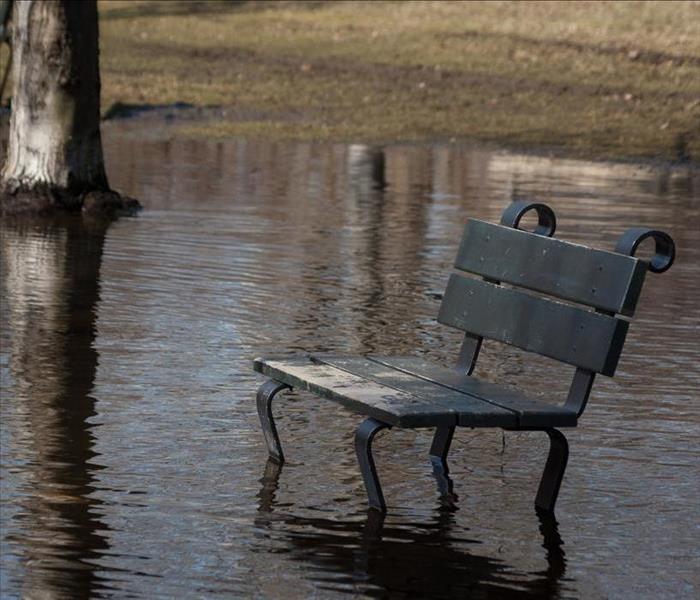 Lynn area flood damage cleanup and restoration for SERVPRO is a "Walk in the Park," we make it "Like it never even happened."
Lynn area flood damage cleanup and restoration for SERVPRO is a "Walk in the Park," we make it "Like it never even happened."
SERVPRO Floodwater Damage Mitigation Returns Lynn Homes to a Safe, Pre-Loss State
Floodwater can cause extensive damage in a Lynn home, particularly carpets, mattresses, upholstery, and other bedroom furnishings. While many items, such as drapes and clothing, can often be salvaged and sanitized after black water exposure, mattresses and carpeting are lost due to the inability to guarantee a completely safe restoration after flood exposure.
SERVPRO floodwater damage technicians preserve Lynn residences with emergency-response, 24/7 services that focus on restoration over replacement where possible. Home floods can be distressing for homeowners to endure, and technicians minimize distress with comprehensive cleanup and rebuilding services.
Preparing Flood-Damaged Bedrooms for Structural Drying with Extraction and Sanitation
SERVPRO flood technicians perform several restoration tasks to salvage bedrooms and surrounding structural materials and contents in Lynn properties.
- Some items, such as carpeting, wet sheetrock, and mattresses, require removal after a flood. Disposal of unsafe or unsalvageable contents is performed after coordinating with homeowners and insurers. Carpet and flooring removal allows technicians to prepare subflooring for drying
- Other contents that may require off-site cleanup can be moved to a SERVPRO-approved warehouse for cleaning, drying, and restoration. These items can include furniture, electronics, jewelry, keepsakes, and even books or documents
- In the event of large-scale flooding, SERVPRO technicians can spray down surfaces with EPA-registered biocides before extraction begins in earnest to mitigate the spread of mold and bacterial contamination throughout the property
- After extraction and sanitation, flood technicians can remove odors with equipment like hydroxyl generators, which use ultraviolet radiation comparable to sunlight to eliminate odor-causing bacteria
After technicians implement adequate floodwater removal, the bedroom is ready for structural drying with air movers and dehumidification units.
We’re Faster To Any Size Disaster and prepared to prove it. Call (781) 593-6663 for emergency-response services from SERVPRO of Lynn / Lynnfield.
Flood Damage from a Storm in East Lynn is Better Mitigated When Addressed by Skilled Technicians
12/20/2021 (Permalink)
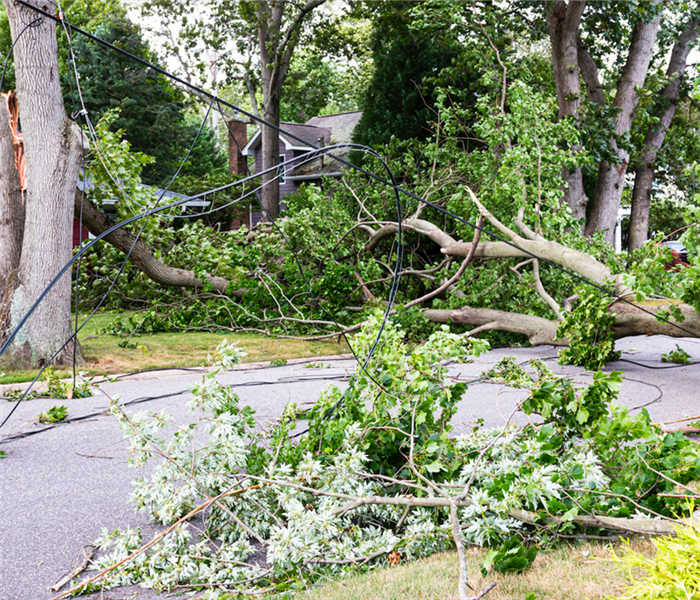 After a big storm passes through our local area, large scale damages can result. Contact SERVPRO 24/7 - 365 days a year - to assess the situation.
After a big storm passes through our local area, large scale damages can result. Contact SERVPRO 24/7 - 365 days a year - to assess the situation.
SERVPRO Features the Flood Damage Technology and Manpower You Need for Fallout from East Lynn Storms
Once a storm passes, you must stay safe as you wait for help to arrive. When that help is SERVPRO, you can count on us to be at your door in East Lynn and ready to get to work within hours of your call.
To prevent further flood damage in East Lynn after a storm, we suggest the following – especially if you know that there is water damage:
- Contact SERVPRO so we can mobilize our Green Fleet to come to your property for assessment and water damage restoration services
- Turn off your circuit breakers to eliminate the chance of electrical dangers
- If possible, remove excess water by blotting or mopping
- Use wood blocks or aluminum foil as barriers between wet carpets and furniture legs
- Stay out of unaffected areas of the home to limit the tracking of contamination
- Never use a regular household vacuum for removing water – wet/dry vacuums only
At SERVPRO, We:
- Provide emergency service 24/7 – Our locally owned and operated franchise is staffed and ready to go should you have storm damage and flooding on your property.
- Have highly-trained IICRC-certified technicians – When it comes to your home, you want emergency services water damage help from people that know how to get the job done right the first time. We are ready to assist!
- Use industry-proven water cleanup and restoration – We utilize the latest technology, techniques, and proven steps to get your home back on track, including repairing your leaking roof from storms, basement flooding, and more.
- Simplify your insurance claims process – Dealing with storm flooding is hard enough, so we take added pressure off your shoulders by assisting you while you navigate the insurance claims process.
Flood damage is an event where you never want to deal with it alone. SERVPRO of Lynn/Lynnfield knows best practices for handling contaminated floodwaters and all of the proper debris removal and restoration protocols. Call us whenever you require assistance by dialing (781) 593-6663.
Ice and Winter Storms in Massachusetts Bring Dropping Temps – Think About Frozen Pipes and Ice Damming
12/5/2021 (Permalink)
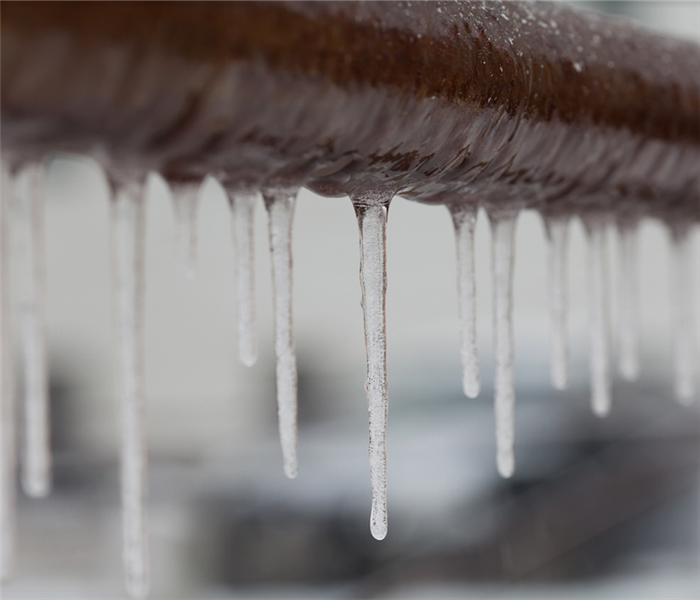 Has your home been affected by frozen pipes and ice damming? Team SERVPRO can help with just such a situation. Contact our certified technicians 24/7.
Has your home been affected by frozen pipes and ice damming? Team SERVPRO can help with just such a situation. Contact our certified technicians 24/7.
SERVPRO Wants Massachusetts Residents to Know What to Look for When it Comes to Freezing Pipes and Ice Dams
Drops in temperatures cause pipes to freeze and possibly burst. In the Lynn area, lines are likely to freeze once the temperatures get below 20° F. This can happen during a cold snap or winter storm in New England, and the resulting water damage can be significant if you are not careful. SERVPRO wants all area residents to know what to look for and prevent such damage from taking place. If you do have an emergency, we are here for water removal services and total restoration to make your Massachusetts property look “Like it never even happened.”
Outdoor piping or pipes that sit in unheated zones in your home could freeze without proper insulation. All residents should know what to look for when it comes to ice dams and freezing pipes. Your pipes outside that are susceptible to freezing include:
- Water sprinkler/irrigation system lines
- Outdoor hose bibs
- Hot tub and swimming pool supply lines
Within your home itself, areas that may be partially heated or unheated can be at risk of freezing, such as:
- Crawlspaces
- Basements
- Garages
- Seasonal rooms
Prevent your lines from freezing and possibly bursting during a cold winter storm by keeping the thermostat inside your home no lower than 55° F. Should you be away from home for an extended period, consider draining your water system and having it turned off.
What are Ice Dams?
During the winter months, homeowners in Massachusetts need to be mindful of ice dam growth. The icicles you see around your home can cause damage such as:
- Loosened shingles
- Gutter damage
- Water backing up into your home’s structure
Remaining proactive to rake snow off your roof or using de-icing methods will help keep ice dams at bay. Should you have water infiltration, SERVPRO is available for moisture detection, mold remediation services, and reconstruction to get everything back to normal again.
Call SERVPRO of Lynn/Lynnfield to assist with frozen pipe or ice dam damage after winter storms. We can instal more insulation in your attic to help prevent snow melt on the roof. You can reach our team 24-hours a day by calling (781) 593-6663.
Activate Flood Removal & Cleanup in Lynn – Call SERVPRO
10/13/2021 (Permalink)
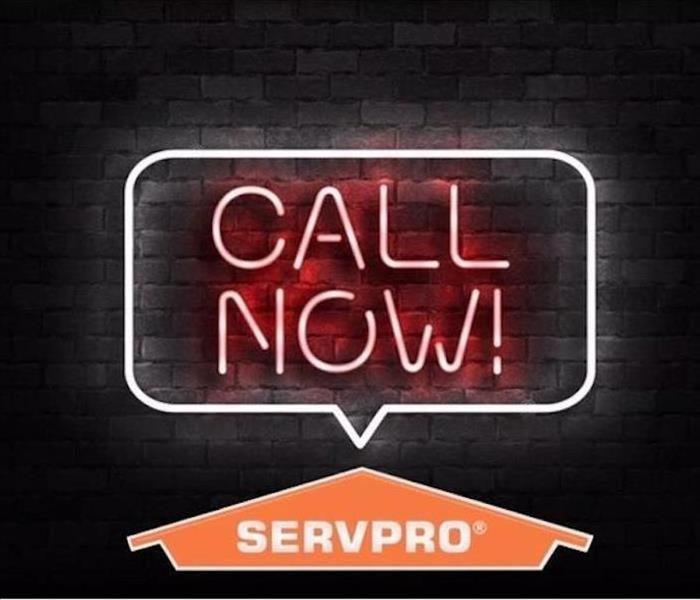 For fast and immediate storm damage restoration for your home. SERVPRO is the team to have on your side. Call now!
For fast and immediate storm damage restoration for your home. SERVPRO is the team to have on your side. Call now!
Avoid Extensive Damage from Mold, Secondary Damage from Floodwaters in Lynn – Call SERVPRO
Floodwaters raging through your neighborhood in Lynn can cause extensive damage in a matter of minutes to homes and businesses. Debris, sand & silt, chemicals, and biological material are all mixed, coating everything inside your home and business. There are dangers from slipping and falling, short-circuiting electrical connections, and viruses and bacteria. Mold can also begin growing in 24 hours or less with the right conditions.
Fast action by SERVPRO initiating flood removal and cleanup in Lynn structures can protect your family, your employees, and customers, and you return your business to normal operations quickly. Within four hours of your call, we are on-site, perform an immediate assessment of the situation and activate the resources needed to immediately begin removing water, debris, and residues while keeping everyone safe. SERVPRO provides mold remediation in Chicago, and we are an "Official Downtown Chicago Licensed Operator."
Among the many services our local SERVPRO franchise provides are:
We also provide external generators and truck-mounted pumps if needed until power is restored. High-capacity dehumidifiers and air movers begin drying the structure and contents before mold colonies become established.
Calling SERVPRO immediately after a flood can also mitigate the secondary damage from contents and structures exposed to high humidity levels, water, and moisture. Many materials can be cleaned and restored if cleaning and drying action begins without delay.
Call SERVPRO of Lynn / Lynnfield for flood removal service in Lynn and surrounding areas. We can help 24/7. Call (781) 593-6663.
Why Is Professional Assessment of Flood-Damaged East Lynn Properties Essential?
9/23/2021 (Permalink)
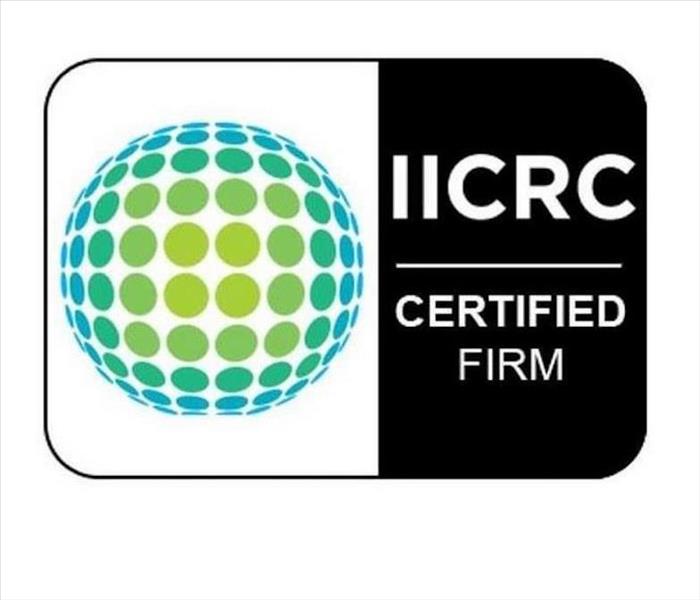 Rely on SERVPRO's IICRC certified technicians to restore your East Lynn flood damaged property, "Like it never even happened."
Rely on SERVPRO's IICRC certified technicians to restore your East Lynn flood damaged property, "Like it never even happened."
SERVPRO evaluates East Lynn residences’ flood damage, locating and planning interventions for a broad range of safety hazards
Although you might feel lucky after what seemed like minor storm and flood damage in your East Lynn neighborhood, arranging for an assessment of potential safety issues is critical. Water trapped in cavities and moisture absorbed by porous building materials sets the stage for progressive deterioration and secondary damage including mold growth, although you are oblivious to its presence.
How Does SERVPRO Assess Post-Storm and Flooding Hazard Risks?
When torrential rains and high winds attack your East Lynn home, ceiling leaks and basement flooding cleanup are not uncommon and can be painfully apparent. You might not realize that due to the individual construction details of your home, however, that hidden flooding and associated damage is possible. The unaddressed storm devastation will present days, weeks, or months later, and delayed water damage remediation is expensive and disruptive. Make a proactive decision, inviting SERVPRO to evaluate your home for:
- Sagging ceilings due to leaking roofs from storm activity
- Walls with bulges or “sweating,” staining, or peeling paint indicating stormwater flooded between behind and between vertical surfaces
- Caches of water trapped in cinder block cells or behind plaster, drywall, or paneling in basements
- Wet floors wicking water pooled behind baseboards
- Mold growth from damp building materials such as insulation or framing
Can SERVPRO Access and Complete Flood Restoration for Trapped Storm Water?
The robust construction background possessed by SERVPRO work crews supports our use of controlled demolition to address basement flooding and wall and ceiling repairs from water damages. Emergency services provided by our Institute of Inspection, Cleaning and Restoration Certification (IICRC)-trained technicians include:
- Strategic punching of weep holes in ceilings to prevent collapse
- Drilled or sawn holes or flood cuts in drywall or mortar joints to release stormwater and permit access for applied structural drying interventions
- Use of advanced technologies to suction water and introduce dry, warm, moving air into confined spaces through negative pressure air systems (hose and drying mat placement where more invasive demolition is contraindicated)
Count on the professionals from SERVPRO of Lynn / Lynnfield when storms flood your property. We’re Faster To Any Size Disaster -- call us at (781) 242-5430.
Does SERVPRO Provide Emergency Flood Damage Clean-Up in East Lynn?
7/17/2021 (Permalink)
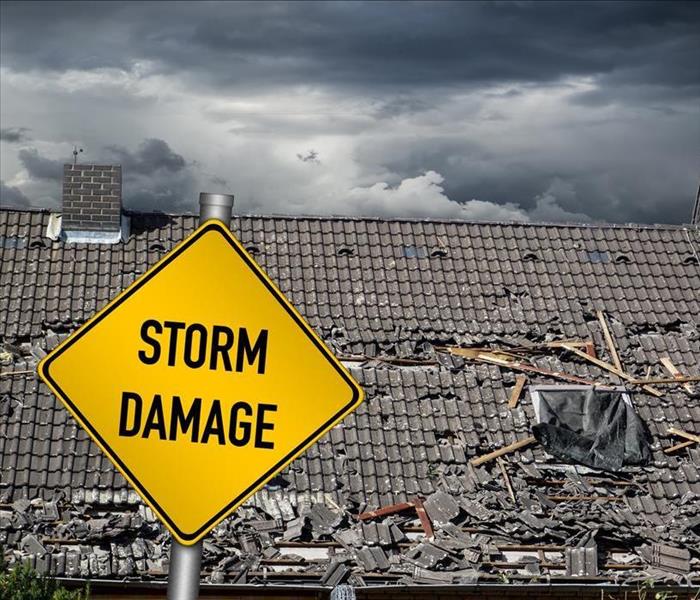 Storm and flood damage is not a DIY project. Call the professionals at SERVPRO for all the storm mitigation services you need.
Storm and flood damage is not a DIY project. Call the professionals at SERVPRO for all the storm mitigation services you need.
SERVPPO Can Help with Basement Flood Damage in East Lynn After a Storm
Flood damage in East Lynn is not always from raging waters after a storm. Water can build up in window wells and leak into a basement. Sump pumps can’t handle the excess water and the basement floods. Broken windows caused by flying debris can allow lots of water into the house during a heavy downpour. Water can seep under the subfloor in the basement, creating excellent conditions for mold infestations.
Fortunately, SERVPRO has managed these types of flood damage events in East Lynn and many more. We have the experience, and we respond in less than four hours to help remove the excess water and begin drying the contents and structure of your basement and home.
SERVPRO provides board-up services to cover broken windows, and we can furnish temporary electrical power to run sump pumps if the local electrical power is not functioning. Our truck-mounted water pumps and extractors can make short work of the excess water in the basement. We also use small wand extractors to remove water in cavities and hard-to-reach areas. In some cases, flood cuts are necessary to remove wet drywall, insulation and dry the structure. Fast response and action reduce the potential for the growth of mold.
Our flood damage services include:
Call SERVPRO of Lynn / Lynnfield for flood damage restoration in East Lynn and surrounding areas. We can help 24/7. Call (781) 593-6663.
How Does a Leaking Roof from Storms Get Fixed in Lynnfield?
4/20/2021 (Permalink)
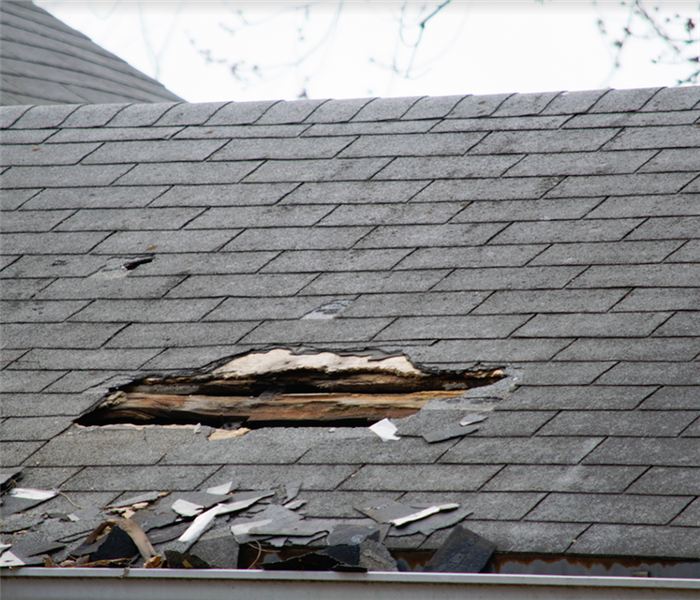 Leaking roof? Contact SERVPRO for remediation services when affected by flood damage.
Leaking roof? Contact SERVPRO for remediation services when affected by flood damage.
Our SERVPRO team can help with repairs and flood damage restoration in Lynnfield homes.
Leaking roofs can often develop when severe summer storms or Nor’easters reach our coastal area. When shingles get removed, or underlayment material becomes compromised, water penetration and subsequent flooding can result. We can help with:
- Flood restoration
- Basement flooding
- Ceiling leaks
- Burst pipes
- Emergency services water damage
- Water damage remediation
Repairing and Restoring Attic Flooding in Lynnfield Properties
Repairing flood damage to Lynnfield home is often directly correlated to the leaking roof from storms and ceiling leaks that result from any water pooling in unfinished attic space. Emergency services water damage can fixate on extraction and preliminary drying, but our general contractor license also allows for full-scale roof repairs and reconstruction when vulnerabilities exist.
From water damage repairs to flood damage cleanup, our SERVPRO of Lynn / Lynnfield team can help. We have leading water restoration techniques and products. Give us a call today at (781) 593-6663.
Flood Damage Cannot Wait!
2/17/2021 (Permalink)
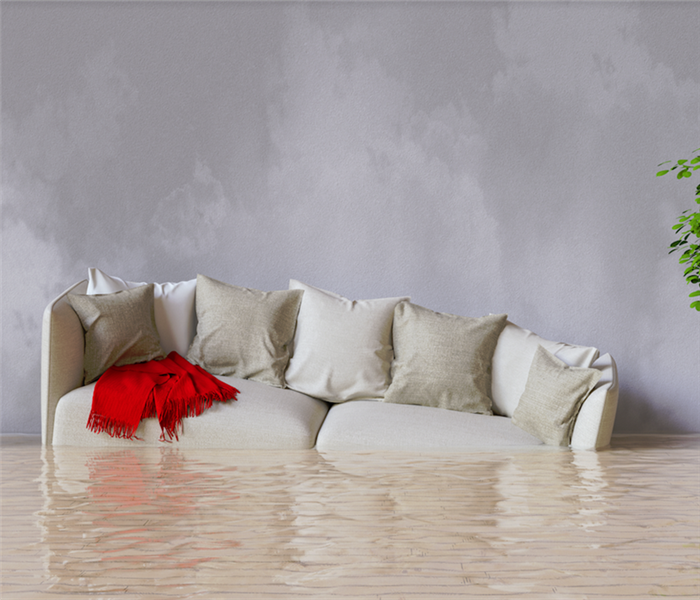 Contact SERVPRO right away when facing flood damage. We are available 24/7 to take your emergency call.
Contact SERVPRO right away when facing flood damage. We are available 24/7 to take your emergency call.
Lynnfield Residents Get Rapid Response From SERVPRO When Called for Flood Damage
When your home gets hit with high winds and torrential rains, there could be several things that go wrong. No matter the season, you need to have a team on-site at your Lynnfield property to get to work as soon as possible. SERVPRO arrives within hours of your initial call, beginning remediation right after assessment to save precious time.
Securing your home after flood damage in Lynnfield is just half the battle. Your exterior must get stabilized, and any damage addressed to keep wind, rain, and debris from getting inside. When SERVPRO arrives at your door, we work to secure your property in many ways, including inspecting your siding, roofing, or windows that have taken on damage. For cleanup, we utilize equipment such as:
- Pumps, extractors, and other industrial-strength water removal equipment
- Powerful fans, centrifugal air movers, and dehumidifiers to evaporate moisture and restore humidity levels
- Careful moisture monitoring with meters, thermal imaging technology, and sensors
- Deodorization and disinfection of all surface areas with the help of EPA-registered products
When your property goes through a significant weather event, SERVPRO of Lynn/Lynnfield is available to help with professional flood damage assistance. You can reach us any time for emergency service by calling (781) 593-6663. With our skills and experience, we get the job done right the first time!
Rapid Flood Removal is Crucial After a Storm
2/7/2021 (Permalink)
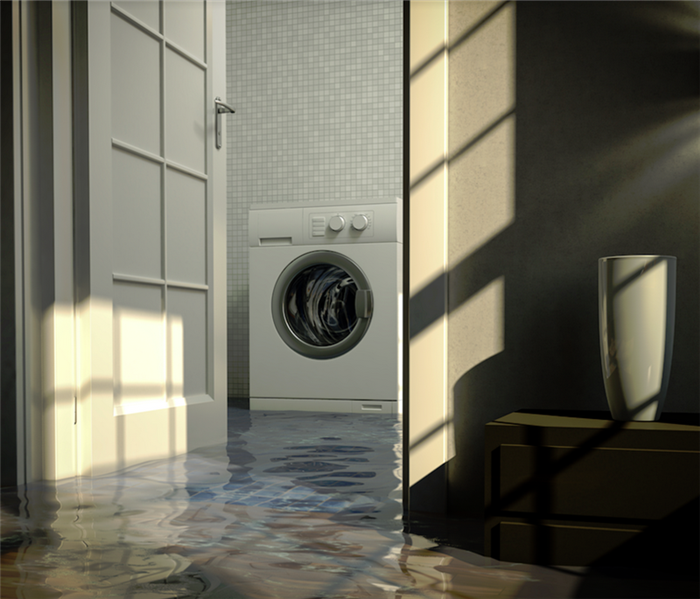 Don’t face flooding and subsequent flood damage alone. Contact SERVPRO’s certified technicians for remediation services.
Don’t face flooding and subsequent flood damage alone. Contact SERVPRO’s certified technicians for remediation services.
Lynn Homeowners Look to SERVPRO for Reliable Flood Removal and Restoration
As the biggest city in all of Essex County, Massachusetts, you will find Lynn situated just 10 miles to the north of Boston along the Atlantic Ocean. Known for being part of the urban core of Greater Boston, this is a bustling region with a population of 90,329 people as of the time the 2010 United States Census got taken.
For years, Lynn was referred to as “City of Sin” because of the reputation for vice and crime in the area. Today, the area is known for a beautiful downtown cultural district, historical architecture, and wonderful open spaces and parks.
Learning About the History of Lynn, MA
The area now known as Lynn was initially inhabited by native Naumkeag people. In 1629, European settlement began with Edmund Ingalls, followed up in 1631 by John Tarbox. Moving forward, further settlement of Lynn brought about the formation of several independent downs, including:
- Reading in 1644
- Lynnfield in 1782
- Saugus in 1815
- Swampscott in 1852
- And Nahant in 1853
During the 19th century, many estates and quaint beach cottages were constructed all along Lynn's shoreline. Because of this, the region and surrounding Atlantic coastline quickly became the fashionable place to spend time during the summer months. Many of these original structures along the coastline are now listed within the National Register under the Diamond Historic District.
Lynn, Massachusetts – Things to See and Do
There are many great locations to take in some local history or spend some time for a day trip. The top attractions in Lynn include:
- Lynn Museum and Historical Society – Located in downtown Lynn, this is an excellent place to go with the family as there is something for all ages. There is an audio tour, interactive displays, courtyards for relaxing, and much more.
- Lynn Shore – Are you hoping to spend some time amidst the ocean air with crashing waves in the background? This beach stop will provide plenty of shops to explore, a local pier, and a boardwalk for the ultimate beach day adventure.
- Lynn Woods – When you want to get out to experience nature, there are lots of great trails in the middle of this stunning natural setting. Locals love to visit Lynn's wooded area to get away from a lot of the hustle and bustle of city life.
Flood Removal by SERVPRO Ensures Your Lynn Interior Gets Back to Normal Fast
Be it a big flood or small; there is bound to be hidden moisture left in your Lynn home after storm waters rush in. Rather than DIY methods that can lead to secondary damage, SERVPRO features skilled IICRC-certified technicians to get the job done right the first time.
Failing to address all moisture with flood removal in Lynn could lead to numerous issues, such as:
- Warped ceilings, walls, and flooring if water remains under the surface
- Walls, baseboards, and flooring might require total replacement if moisture lingers
- Potentially harmful microbial growth may develop, including mold colonization
SERVPRO of Lynn/Lynnfield is available whenever you need us for flood removal measures after a recent storm. Call us at (781) 593-6663!
Lynn Residents – Experience the Salem MA Weekly Meditation Group
12/14/2020 (Permalink)
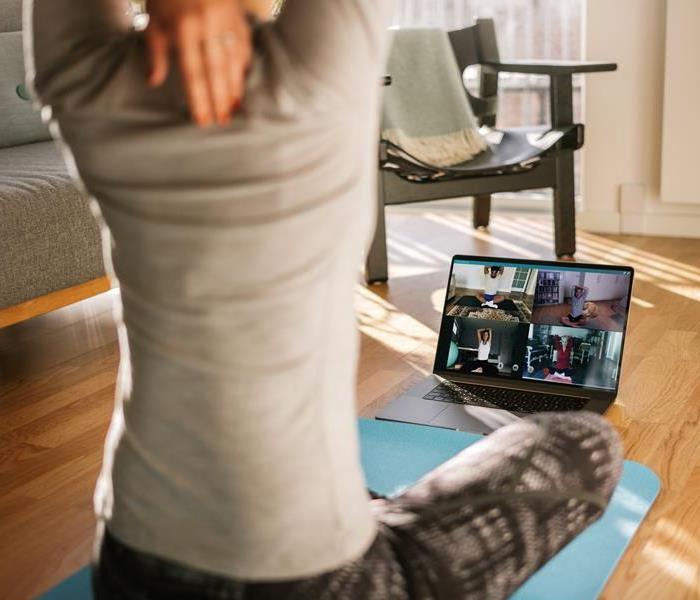 A healthy mind and body makes daily life so much better. Try out the Salem MA Meditation Meetup Group virtual classes.
A healthy mind and body makes daily life so much better. Try out the Salem MA Meditation Meetup Group virtual classes.
Virtual Meditation is Available for Lynn, MA Residents Online Via Zoom
Meditation is something that many people enjoy as a way to relax or to look into their higher self. This is a process that is based on Kriya practices, and you experience blissful silence as you are guided through the process. Each week, the Salem MA Meditation Meetup Group offers virtual classes for people to participate in openness and healing for the mind, body, heart, and soul. If this is something that you are interested in, you can take part without ever having to leave your home or office. All you have to do is register and log into the online Zoom class, and you can begin the experience with Judy and the rest of the participants.
- Date: Sunday, December 20, 2020
- Time: 5 pm to 6 pm
- Where: Online virtual meditation via Zoom
- Cost: Free
Health and wellness are essential, and SERVPRO of Lynn/Lynnfield likes to encourage local residents to take charge of their well-being. If you have issues after a storm and you require assistance with groundwater cleanup, our skilled team at SERVPRO has the tools to handle the job. Our fleet of vehicles is at the ready, meaning that we can be there with 24/7 emergency on-call services when you contact us at (781) 593-6663.
East Lynn Business Professionals – Don’t Miss Business Ethics 1 Day Virtual Live Training
12/7/2020 (Permalink)
 SERVPRO of Lynn/Lynnfield supports continuing education, if your in a business you can gain from This Business Ethics 1 Day Virtual Live Training.
SERVPRO of Lynn/Lynnfield supports continuing education, if your in a business you can gain from This Business Ethics 1 Day Virtual Live Training.
Academy for Pro’s is Hosting Live Training Available Virtually for East Lynn, MA, Area Residents
Business ethics training is essential for anyone involved in the field of business, all avenues. Proper business ethics is critical if you want your organization to be successful over the long-term. In this world of social distancing, you can still take part in valuable training sessions. This Business Ethics 1 Day Virtual Live Training session features all of the details that you need to help you work with suppliers, employees, customers, and the competition. Registration is required for this online event, and anyone interested in learning more about business ethics is welcome to attend.
- Date and Time: Two options available – Thursday, December 10, 2020, at 10:30 pm and Friday, December 11, 2020, at 6:30 am
- Location: Online via EventBrite
- Cost: $395 - $695, tickets available online
Local businesses and residents of East Lynn are vital to us at SERVPRO of Lynn/Lynnfield, and we always support continued learning and enrichment. If you suffer from flood damage after a significant storm rolls through, we can come out to your home to handle the cleanup and restoration. Call our team at (781) 593-6663, and we will arrive on-site and ready to work within hours. We are Faster to Any Size Disaster!
What Are the Different Types of Flooding that Can Impact Lynnfield Homes?
10/18/2020 (Permalink)
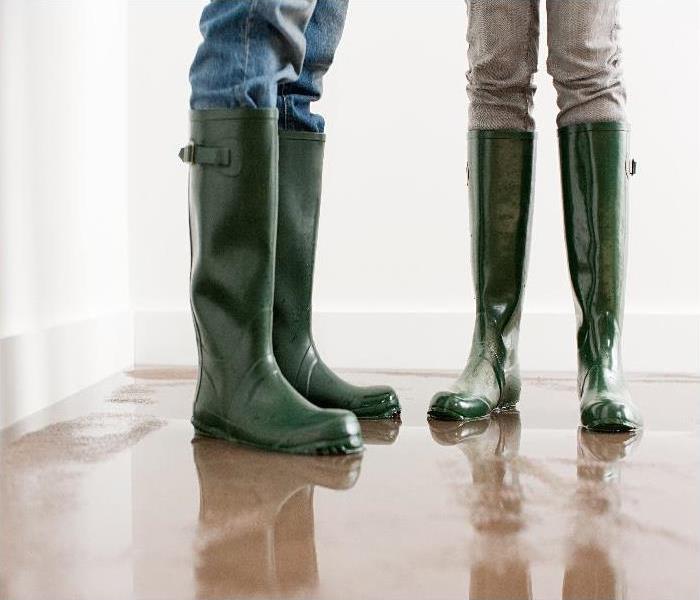 Contact SERVPRO of Lynn / Lynnfield at (781) 593-6663 for expert flood damage service.
Contact SERVPRO of Lynn / Lynnfield at (781) 593-6663 for expert flood damage service.
Storms Bring a Variety of Flooding to Lynnfield, and SERVPRO Can Provide Fast Mitigation
Flooding can cause water to come pouring into your home in various ways. Groundwater from natural flooding can be highly contaminated and present all kinds of biohazards. Certain flooding comes from clean water but can cause severe damage to the structure and content. Our technicians assess the situation and provide the mitigation you need in Lynnfield.
What are the Most Common Flood Situations SERVPRO Technicians Encounter?
SERVPRO technicians encounter different types of storm flooding and understand the flood damage it can cause in Lynnfield. Knowing what type of flooding they are dealing with and the water category, they can then provide the right mitigation. Every situation is unique and can call for a different approach. Here are the typical flood scenarios are technicians see:
• Natural Flooding – Steady rainfall and even heavy snowfall can lead to creeks, lakes, and streams rising. When they overflow, it can result in water penetrating homes as the levels rise and spill over their boundaries. The water, in this case, is contaminated
• Flash Flooding – This type of flooding occurs rapidly. It can be from heavy rainfall or storms such as hurricanes. Flash flood water is also contaminated. The water surges in swiftly and can damage structural elements quickly.
• Roof Flooding – Storms can cause roof damage and leave your home vulnerable to water intrusion. This is typically clean Gray Water that can quickly degrade into category 3 Black Water but can cause moisture to spread throughout the entire home.
• Wind-Driven Flooding – Strong winds from storms can tear the siding off a home; windows can break, and winds can damage the outside. Winds like this often accompany torrential rainfall and can drive water inside the residence.
No matter what type of flooding causes flood damage to your home SERVPRO is here to help. We understand the importance of returning to normal as quickly as possible when a flood comes surging through. Our Green Team arrives on the scene ready to clean, repair, and restore your home to preloss condition whenever possible.
Contact SERVPRO of Lynn / Lynnfield at (781) 593-6663 for expert flood damage service. We’re Faster to Any Size Disaster!
Will My Interior Be the Same After a Flood?
9/17/2020 (Permalink)
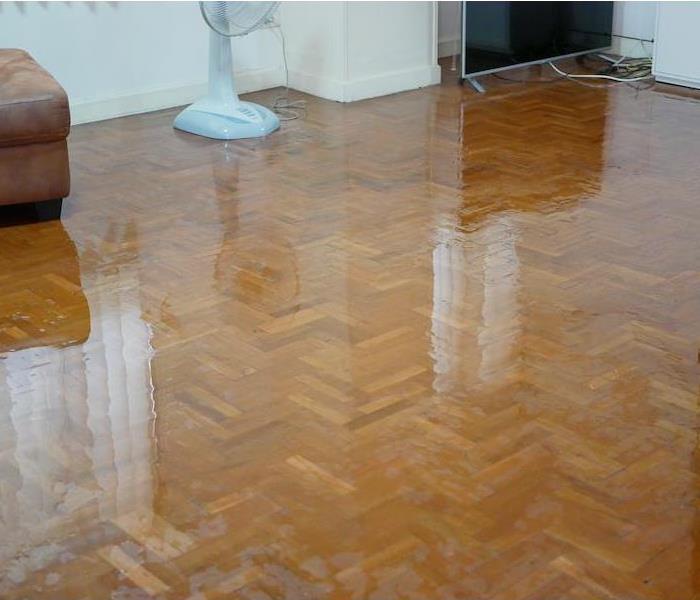 When floodwaters invade your home, contact SERVPRO for fast flood damage restoration.
When floodwaters invade your home, contact SERVPRO for fast flood damage restoration.
Professional Flood Damage Recovery Ensures Your Lynn Home is Returned to Pre-Loss Condition
Flash flooding can come and go without warning, leading to varying levels of damage within the lower floor or basement of your home. While floodwaters in Lynn can bring a range of contaminants into your home, prompt attention and cleanup ensure that you and your family do not get subjected to harmful bacteria. At SERVPRO, we are Faster to Any Size Disaster, and we can come to you 24/7 for emergency restoration services.
What If There are Toxins in the Floodwater?
Flood damage in Lynn poses a threat due to the level of infectious and toxic substances that floodwaters carry. Our skilled technicians are vigilant about containment, and we always adhere to local regulations for the disposal of all fluids. To help minimize risks before starting on your flood loss job, we often overspray the impacted area with EPA-registered disinfectant. While on the job, we also:
- Seal off all workspaces with heavy-duty plastic sheeting
- Wear personal protective equipment (PPE) for safety
- Use foot coverings that eliminate the potential for tracking harmful biohazards into other unaffected areas of the house
- Use air-scrubbers that help to filter out dangerous residues
We Take the Time to Map and Monitor Moisture
Water migrates to drier spaces, and moisture tends to get into hard-to-reach areas or difficult to detect with the naked eye. Because of this, our team uses moisture metering and detection tools that help us to address hidden moisture before it has time to cause secondary damage. Along with applied structural drying techniques for airflow and dehumidification, the entire job gets wrapped up with the application of powerful cleaning agents for sanitization and deodorization.
When you need prompt flood damage assistance, we are here to help at SERVPRO of Lynn / Lynnfield. Call (781) 593-6663 to have a crew deployed to your home to make it, “Like it never even happened.”
Recovering from a Home Flood
8/3/2020 (Permalink)
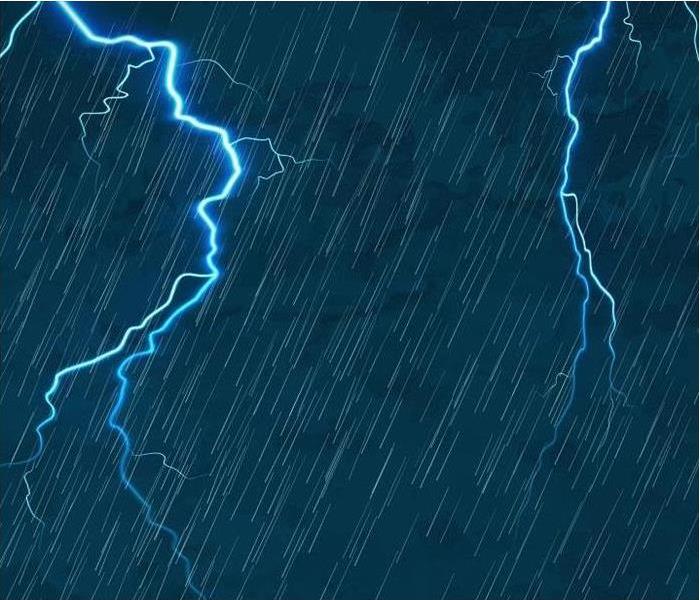 Water damage needs to be handled by professionals
Water damage needs to be handled by professionals
Flooding affects millions of American homes each year. Whether it’s caused by natural disasters, unforeseen accidents or poor home maintenance, flooding is without a doubt a homeowner nightmare. To help you get your home and life back together after a flood, here are a few essential tips.
- Immediately call your insurance agent. Don’t throw out any damaged property until your insurance agent has inspected it.
- Create an inventory of the damaged or lost items and take photos. File the flood insurance claim that includes lists of damaged items, photos, your policy number, name of insurance company, and contact information.
- Avoid direct contact with floodwater, which can most likely be contaminated. If sewage is backing up in the shower or under the toilet, your main sewer line could likely be clogged or broken. In that case, stop using sinks or toilets and call your utility company immediately.
- Check for damage to your home, both outside and inside. Be aware of hazards, such as fallen power lines. Standing water may also be electrically charged from damaged power lines.
- If you suspect damage to utilities, shut them off immediately if safe. Here’s how to shut off utilities safely:
- Water – To shut off all water to your home, first locate the master valve. You can find it in the basement, garage, near the water heater (if you don’t have a basement) or even outside your home.
- Electricity – Locate the main circuit box that’s mounted on a wall, typically in the basement. Ensure it’s safe to enter the basement first and bring a flashlight. Turn off the main switch in the panel to shut off all electricity in your home. If you see frayed electrical wiring or sparks, call the utility company immediately.
- Gas – First, locate the shutoff valve on the riser pipe from the ground to your meter. If your meters are newer, the valve could be on the service line going from your meter into the house. Use your hands or, if needed, an adjustable pipe or crescent-type wrench to close the valve.
- Once you’ve shut off utilities, call local authorities and wait for their approval to turn them back on.
- To help save your flood-damaged home and contents, standing water needs to be removed and the area should be dried immediately.
- Depending on the type of floodwater, the type of contents, and how long they have been soaked, flood-soaked, porous contents like walls, carpet or furniture can be either restored or discarded.
- Salvageable contents must be immediately disinfected and dried to prevent mold growth. Remember, mold can grow within the first 24-48 hours after a flood.
- Flood cleanup is a complicated process that requires specialized knowledge and equipment, such as low-grain refrigerant dehumidifiers and high-capacity air movers. It consists of moisture level reading and monitoring, water extraction, drying, disinfection, and deodorization.
For water damage restoration, your best plan is to hire a professional restoration company that can get your home restored quickly and correctly. The professionals at SERVPRO of Lynn/Lynnfield are highly trained in property damage restoration and respond immediately to minimize the impact of the loss. For emergency flood damage restoration, call SERVPRO of Lynn/Lynnfield at 781.593.6663.
Avoid Sump Pump Problems!
8/3/2020 (Permalink)
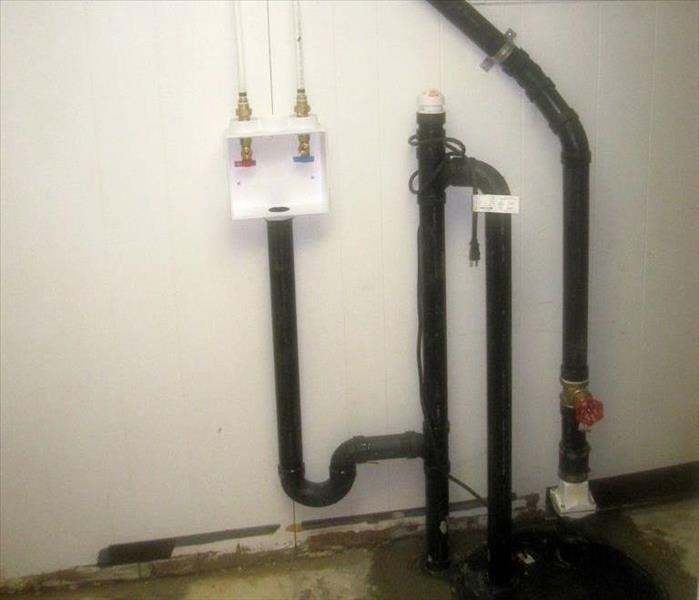 A sump pump only protects your home if it is working!
A sump pump only protects your home if it is working!
A sump pump can be the difference between a costly flooding incident and a dry basement. However, it’s also important to keep your sump pump in good shape so it can keep your basement dry all year long. To learn more about sump pump maintenance, check out these common sump pump mistakes to avoid.
- DIY Installation – If you’ve never installed a sump pump, don’t risk doing it yourself. You might end up paying a lot more for damages than for the cost of proper installation. Hire a plumbing professional to avoid the risks of faulty installation.
- No Backup Power – During a powerful storm, your home can lose power, putting your basement at risk for flooding. To ensure your sump pump continues to work during a power outage, connect it to a backup power source, such as a generator or battery backup system.
- Not Testing Your Sump Pump – Test your sump pump system twice a year – before spring and fall – to make sure that it’s in good working condition. To test the system, pour water in the sump pit until it activates the pump switch. If it empties slower than normal, check the discharge pipe or the pump itself for clogs and other issues.
- Ignoring the Discharge Pipe – Check that the drainage pipes are tightly connected and are directed away from your home’s foundation. Also, inspect the pipe for damage and clogs. Seek help at once if you find clogs or damage. Anything that impedes the flow could result in basement flooding due to slow drainage or no drainage at all.
- Letting Debris Get in the Pump – Ensure your sump pump doesn’t sit on debris such as silt or gravel, which could be sucked up into the pump, ruining the motor. Instead, place it on a steady flat brick. Also, ensure the sump basin has a filter fabric around it to stop debris from coming in.
- Ignoring the Float Switch – This part tells the sump pump motor to stop once the water level goes below the float. Your sump pump needs ample space around the float to both float and sink freely.
- If there isn’t enough room or if there is some type of obstruction in the way, the float may cause the pump to work improperly, which can burn up your motor.
- Unplugging the Pump – This can happen if someone unplugs the sump pump and forgets to plug it back in. To prevent this, never unplug the pump or make sure you plug it back in if you do.
- Covering the Sump Pump – Knowing where your sump pump is found is important but if you forget, you might end up piling stuff on top of it. That can result in damaging the sump pump and limiting accessibility. When storing items in your basement, always locate your sump pump first to avoid this problem.
Routine sump pump maintenance goes a long way in guarding against basement flooding. Schedule a thorough inspection with a septic tank maintenance professional or plumber twice a year. For professional water damage repair or mold removal, contact SERVPRO of Lynn/Lynnfield at 781.593.6663.
How to Storm-Proof Your Home
1/25/2020 (Permalink)
 Better safe than sorry! Preparing your home for storms now can save a lot of damage later
Better safe than sorry! Preparing your home for storms now can save a lot of damage later
Are you looking to prepare your Lynn, Lynnfield or Nahant Massachusetts home for a hurricane or storm? Nobody wants to end up with a torn-down home or a roof with holes. Do you want to know the best way to protect your property from storms? Keep reading for our guide on how to hurricane-proof your home.
1. Stock Up on Essentials
The 2019 Atlantic hurricane season that ravaged the US last year taught many Americans to prepare for natural disasters. The 2018 Atlantic hurricane season formed 8 hurricanes, 2 of which were considered major. A total of 15 named storms came from that season, comparable to an average season with 3 major hurricanes out of 6. Still, these hurricanes taught people the importance of preparedness. Take inventory on what you have at home. If you plan on staying in your house to endure the hurricane, stock up on a lot of non-perishable foods. It’s also good to have a battery-operated radio and flashlights in the house. Of course, make sure you have extra batteries for each device. Don’t forget about the essentials if you have a pet.
2. Clean Your Yard
If you want to know how to storm-proof your home best, don’t neglect your yard. You want to protect your home from anything that can take flight when the hurricane hits. Often, yards are where flying, destructive debris comes from. Before the storm hits, clear your yard. Secure your lawn furniture, trashcans and yard ornaments. If you have a grill, potted plants or other lawn accessories, bring them inside. It’s also important to remove all dead and dying limbs from your trees. Anything small that you can pick up or carry should get cleared out. A hurricane’s high-speed winds could make any of these items flying missiles. Tie-down larger items like sheds, doghouses and swing sets.
3. Protect and Seal Your Roof
Many people believe the roof is the weakest part of the house, but garage doors and windows are even more vulnerable. No matter how good the condition of your roof, it would be wise to prepare it for the incoming storm. Seal down any chimneys or vent pipes that lead into your house. Clean out any clogged gutters and downspouts as well. Otherwise, the water may spill over the sides and soak through the home’s foundation. If you have roof tiles or shingles, secure them with roofing cement. Disconnect and bring any exterior TV antennas inside, then seal any wire openings. This will help you avoid damages from storms, especially structural and water damages. If you’re afraid that your roof will take wing from the top of your house, reinforce it with uplift protection. You can retrofit your roof with hurricane clips yourself or with professional help. First, don’t forget to talk to a contractor to check the structural integrity of your roof system.
4. Seal Doors and Windows
Do you want to know how to protect windows during hurricane season? As we stated earlier, anything can start flying off during a storm. Your windows may break and let in wind and rain. When wind enters the home, it can increase the pressure under the roof. High-pressure from inside the house can lead to your roof popping off. It’s not too different from a can of soda that has been shaken. To protect your family from this scenario, use storm shutters. They provide great protection for your windows and doors. You can create DIY storm shutters by boarding up your windows. For your doors leading outside, install deadbolts if you don’t already have them. The deadbolts will help hold your doors closed. If possible, you can also install doors that are already made to survive hurricanes. Make sure to install these protective shutters and locks on all sides of the house. Hurricanes may come from a certain body of water in a specific direction from your house, however, they can swirl in any direction too.
5. Reinforce Your Garage Door
Often, your garage door can be one of the weakest links in the home. After all, garage doors are not made to withstand the violent winds of a hurricane. If you have a garage, you should learn how to secure the garage door for a hurricane. Once your garage door goes down, the rest of your house may soon follow. The high-speed winds pressurize the house and then blows off the roof. Check your garage door for a wind or pressure rating. The ideal garage door is a single and windowless door. It should also have the rating to withstand 50 or more pounds of pressure per square foot. If possible, fortify your garage door. You can buy or DIY braces for the garage door which you can disassemble. Use your car as an extra brace for it as well.
6. Take Measures Against Flooding
If you live in flood-prone areas, this is one of those things you shouldn’t forget to do. Check your flood risk and start making a list of things you can do to prepare for flooding situations. Before the flood, you want to reduce the risk of damage from flooding as much as possible. Elevate any electrical appliances and systems. If your area is very prone to flooding, consider elevating the entire home. The Federal Emergency Management Agency (FEMA) has a more extensive guide on how you can protect your home before, during and after a flood.
7. Get Insurance Coverage
You already know how to prepare your home for a hurricane. Now, let’s talk about what you can do to prep it insurance-wise. Update your insurance and make sure you have the right amount to cover any damages. If you have a homeowner’s insurance, check if there is coverage for storms. If there isn’t, it’s time to start looking into extending the coverage to insurance for storm season. If the insurance company doesn’t have that kind of coverage, start shopping for one that does. When you go shopping for hurricane-related damage insurance, don’t do it right before the storm hits. Most insurance companies may stop selling coverage 48 hours before a hurricane watch. You should also find out if there is a waiting period before the coverage takes effect.
How to Hurricane-Proof Your Home and Stay Safe During Storm Season
That is our quick guide on how to storm-proof your Lynn, Lynnfield or Nahant home. Follow these steps and you’ll be better prepared during the storm season.
If you'd like more information please call our SERVPRO of Lynn/Lynnfield office at 781.593.6663
Prepare Your Business For The Next Storm
1/21/2020 (Permalink)
 Make a New Year's resolution to prepare your business for the next storm
Make a New Year's resolution to prepare your business for the next storm
IT’S A NEW YEAR…IS YOUR BUSINESS PREPARED?
As the calendar ticks over to a new year, we hope you’ve had a relaxing and happy holiday season. And whether or not you typically make New Year’s resolutions, SERVPRO of Lynn/Lynnfield wanted to challenge you to try something slightly different this year; make a resolution that will prepare your business for a storm or disaster should the worst happen in 2020.
Understand Your Biggest Risks, Start Planning Now
In Lynn, Lynnfield or Nahant Massachusetts preparation is always essential to a smooth recovery and keeping your business as strong as possible. Failing to prepare will slow you down as you compete with other companies to line up help and figure out what you need to do to keep your business alive. In other words, inadequate planning compounds headaches, costs, and stresses during an already incredibly stressful time—and it could cost you your business. The harsh reality is that many businesses fail within a year if they are not able to reopen doors quickly after a disaster.
Putting together a emergency response plan (ERP) may also sound stressful when you’re already busy with other important work. But if you spread the tasks out amongst a team over time, it’s relatively easy. And in addition to gaining the peace of mind that comes with knowing you’ll be ready for the worst, you may learn some new and important things about your business as you go through the process. To make the process manageable, start small. To begin, focus on four things:
- Form a response team, including a point person to lead the team and team members from each department.
- Research the biggest risks your business faces and evaluate how they could potentially affect your business, considering everything from potential impacts to day-to-day operations, to the impact on the community or your supply chain.
- Start a disaster recovery plan by compiling plans and documenting teams and emergency contacts in a centralized document (see below for some resources).
- Prepare an emergency kit that includes the key supplies you would need in the event of a disaster.
Once you have fundamentals in place and learn more about what’s critical for your business, you can keep building out your plan.
Resources for Developing or Updating Your ERP
Great ERPs are built one step at a time, and to make getting started easier you can use SERVPRO's ERP app. It provides prompts for the kinds of questions you need to be considering and information you need to be gathering as you build a plan.
It’s also important to remember that once you have an ERP in place, it should be updated on a regular basis since employees come and go and business circumstances evolve.
Have a Safe and Productive Year!
That’s it. If you can carve out some time to get your ERP rolling and establish a partnership with Salem of Lynn/Lynnfield in 2020, you will be able to rest much easier the next time the forecast calls for something scary. And that will make for a better 2020 and beyond.
For more information call SERVPRO of Lynn/Lynnfield at 781.593.6663
What To Do After Incurring Storm Damage
10/24/2019 (Permalink)
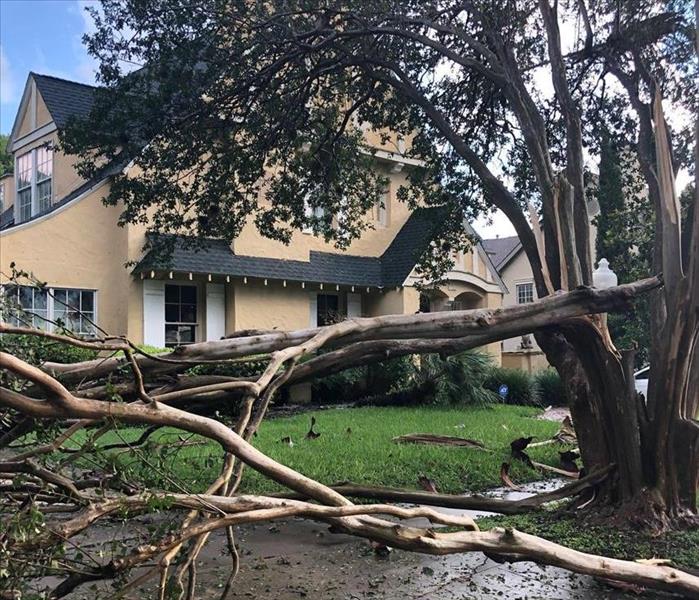 Be prepared for when storm damage hits.
Be prepared for when storm damage hits.
Storm damage can occur at any time and can cause an immense amount of harm to your home. Heavy rains can cause flooding and powerful winds can cause roof damage and downed trees on your property. Some post-storm damage can create safety and health hazards as well, so having a strategy to deal with damage will help you to be ready to take steps immediately after the storm.
Take Safety Precautions
Heavy winds and rain can create physical hazards such as collapsed roofing materials, window damage, collapsed walls or standing water in the basement or home interior. In addition, moisture can soak into furniture, carpeting, and building materials making the perfect environment for mold growth that can cause health issues. Shut off the main gas line if you smell gas. Beware of broken glass, exposed nails, and other sharp objects on the property. Contact SERVPRO of Lynn/Lynnfield to help do basic tasks to secure your property and make it safe to use. If necessary, arrange for an alternative place for you and your family to live while your property is being restored to safe living condition.
Photograph the Damage
If it is safe to move around your property, use your cellphone or a camera to photograph the damage so that you will have a record for your insurance company. This action will ensure that you are fully compensated.
Contact Your Insurance Company
Contact your insurance agent to notify them about the damage to your home immediately. The company will send out an adjustor to determine the extent of the damage so that payment for repairs can be made.
Look Into Federal Disaster Assistance
The federal government may have declared the area affected by the storm as a disaster area that is eligible for low-cost loans to help restore your property to normal. You will be required to file documents to receive these loans.
When a storm-related disaster strikes, it may seem overwhelming, but these steps can help you to begin the process of restoring your home, and your life, to normal. At SERVPRO of Lynn/Lynnfield, we provide 24-hour emergency disaster service. We specialize in the stabilization and restoration of homes and businesses that have suffered small or large loss from water, flood, wind, storm, fire and smoke disaster. Call us today at 781.593.6663
Summer Storm Emergencies
8/1/2019 (Permalink)
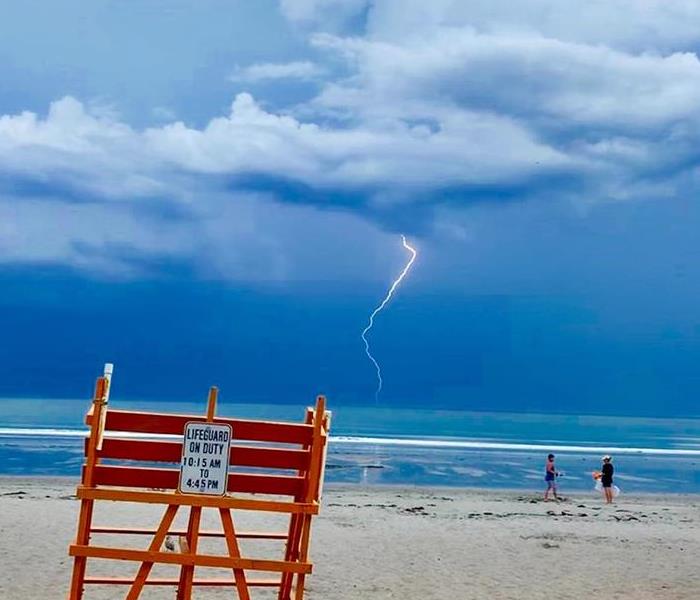 Summer storms can cause unseen damage
Summer storms can cause unseen damage
Summer storms may be great for your lawn and garden or can be a perfect excuse to stay inside in pajamas while reading and napping the day away, but sometimes they can also cause damage to your house. Of course, your home is designed to withstand the ordinary storms expected in your area, but sometimes an extraordinarily heavy storm with extreme wind and hail can take a toll on your house's exterior. When such an event happens, it's important to have repairs conducted quickly and efficiently, so your house will be back in tiptop shape and ready for the next storm.
Exterior Home Damage
Hail can be a concern during a thunderstorm as it causes cosmetic damage to a roof and siding. More importantly is how it can damage the seals around exhaust vents, windows, or chimneys and allow water to enter. Worse yet are the winds associated with a heavy hail or thunderstorms which can remove a shingle or piece of siding, your home's first layer of defense against the weather. The problem with this type of damage is that once it occurs it compromises the linking systems of the shingles or siding, which means that not only can water penetrate to the interior of the house, even a minor storm is likely to exacerbate the problem by causing more damage.
Interior Repairs
Once the exterior of the home is damaged, water can and will enter the house and cause a different problem. Water damage is not a simple repair, as it penetrates through walls, floors, and all the hidden crevices inside the home. Without a professional who understands what to look for and how to efficiently conduct repairs, water will leak into places with no airflow and take forever to evaporate. Another problem caused by moisture is mold, which once formed will only get worse and never go away until properly cleaned out, which often means the expensive proposition of full replacement of drywall, framing, and insulation.
Enjoy the summer storms as they occur, but be sure to have your home inspected regularly to check for damage. When you do have damage, have it repaired immediately. In the unfortunate event that you receive minor or major home damage after a heavy storm, contact SERVPRO of Lynn/Lynnfield at 781-593-6663.
Unexpected Disasters!
8/1/2019 (Permalink)
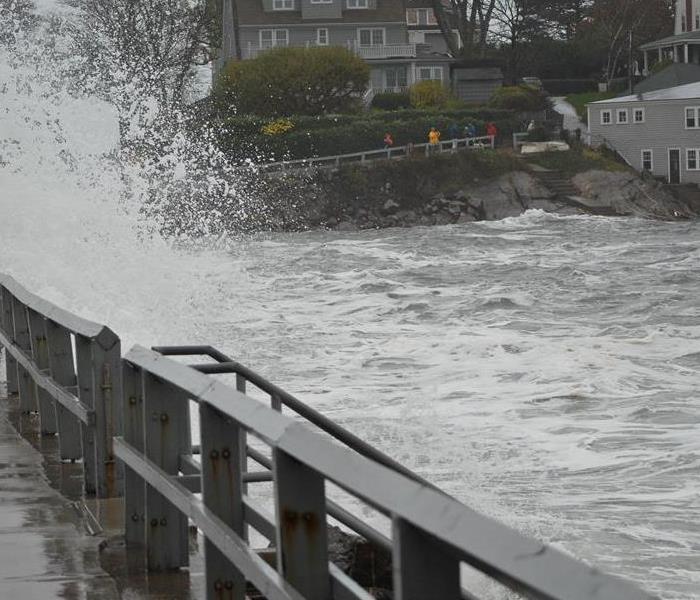 Storm flooding in Marblehead, MA
Storm flooding in Marblehead, MA
Disasters can take many forms, but always have one commonality. You weren’t expecting it. You may have some warning of storms and flooding according to a weather report, but you expect your home or business building to be designed and built to manage such conditions. Fires are never expected otherwise you would avoid the situation which caused it. The first step to handle such a situation is to have a preparedness plan in place in case of emergency. Part of the preparedness plan should be to know the name of a local contractor who specializes in such repairs so you can begin the process of returning to normal as quickly as possible.
Fire
Fire is arguably the most terrifying of disasters because of the immediate risk to your family’s safety. Afterwards, the loss of precious heirlooms and irreplaceable personal memories can also be devastating. Your home will have obvious fire and smoke damage, but you should also be aware there is likely soot in your ventilation system, carcinogens deposited in the attic and crawl space, and unseen structural damage. A great contractor knows what to look for and how to return the home to normal while understanding the trauma you’ve experienced in order to make the rebuilding process as easy as possible.
Water Damage and Flooding
Flooding can also be a devastating event, both for the emotional stress of the event and the physical damage it causes to your home. Again, a specialist who deals in disaster restoration will know how to empathize with you during your time of sorrow while making the repairs quickly so you can return to a normal life.
Storm
Storm damage can be as minor as hail breaking a window or as disastrous as a tree falling on your home. In either case, there is likely going to be hidden damage only a disaster contractor would be aware of. As important as it is to immediately repair the obvious damage, the same storm put water inside the structure of your home, causing a potential for mold or rot which needs to be addressed.
After a disaster, you have plenty of issues to deal with. There is no need for the repair of your home or business to be an additional problem to face. Call the experts at SERVPRO of Lynn/Lynnfield at 781-593-6663. We are available 24-hours a day to help.
Why 2019 Could Be a Record Breaking Year for Floods
7/29/2019 (Permalink)
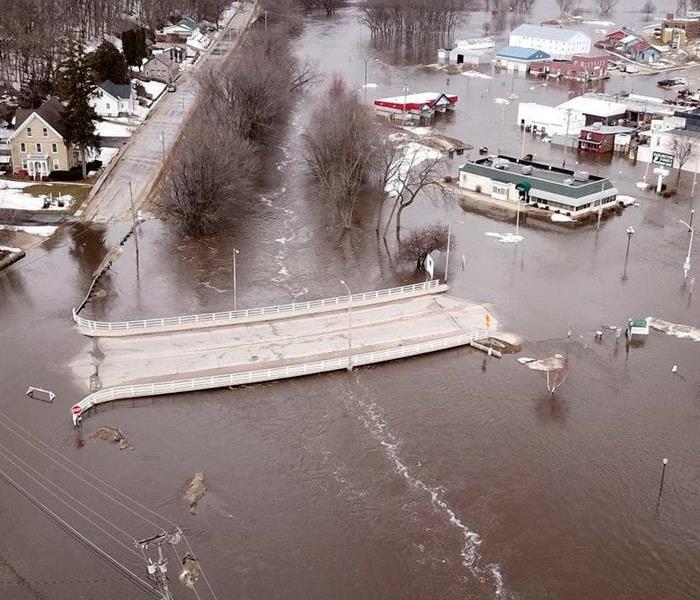 66% of the United States is prone to flooding
66% of the United States is prone to flooding
When it comes to flooding, there’s no off-season. Floods can strike at any time, almost anywhere, and only increase in threat with the onset of hurricane season. This may explain why every state in the continental U.S. has experienced some form of flooding over the past 10 years, according to the Federal Emergency Management Agency.
Spring is traditionally the period when flooding is particularly common, and it appears as though that may be especially true this year, and perhaps even into the better part of summer, based on analysis from the National Oceanic and Atmospheric Association (NOAA).
In its spring outlook report, the NOAA stated at least 66% of the contiguous U.S. is prone to experience overland flood risk for the entirety of May. Already, several parts of the country are in states of emergency, particularly the Midwest.
Exceptionally rainy this spring
The rationale for the NOAA’s assessment is a combination of factors. Most notably, the U.S. has received copious rainfall. The Boston area serves as a classic example. Of the 30 days in the month of April, Massachusetts’ capital city experienced rain for 22 of them.
That’s been the story for most of the nation, only conditions have been far worse in low-lying and flat portions of the country. Melting snow and spring thaw created a perfect storm of moisture-rich conditions.
Neil Jacobs, acting administrator at NOAA, said preparation is paramount for homeowners and business owners, as well as city and town planners.
“In addition to the safety aspects, our rivers are critical to the economic vitality of the nation, supporting commerce, recreation and transportation,” Jacobs advised. “NOAA forecasts and outlooks help people navigate extreme seasonal weather and water events to keep the country safe and moving forward.”
Evacuations ongoing in parts of Gulf Coast
Swollen rivers are proving problematic in the nation’s midsection. Evacuations were recently ordered for those living in proximity to the Mississippi River due to levee breaches, according to multiple sources. The Mississippi and Red River received record amounts of wet conditions, causing them to rise 200% higher than what is typical for this time of year, NOAA reported.
It very well may be a record-setting year for flood frequency, warned Ed Clark, director of the National Water Center at NOAA.
Flooding is the No. 1 natural disaster in America and it’s important that you treat it as such. It’s also highly correlated with hurricane development, a season that is just around the corner and warrants strategic preparation. Here at SERVPRO of Lynn/Lynnfield, we specialize in water damage restoration and flood recovery, by offering 24-hour emergency response services. Over the years, we have helped thousands of clients recover from disasters – both big and small. By providing services to mitigate fire, water and storm damage, we help reestablish businesses and restore communities. Contact us today to learn more about our services at 781.593.6663.
DISASTER PREPAREDNESS FOR OUR FURRY FRIENDS
9/18/2018 (Permalink)
Emergencies come in many forms, and they may require anything from a brief absence from your home to permanent evacuation. Each type of disaster requires different measures to keep your pets safe, so the best thing you can do for yourself and your pets is to be prepared. Here are simple steps you can follow now to make sure you’re ready before the next disaster strikes:
Step 1: Get a Rescue Alert Sticker
This easy-to-use sticker will let people know that pets are inside your home. Make sure it is visible to rescue workers (we recommend placing it on or near your front door), and that it includes the types and number of pets in your home as well as the name and number of your veterinarian. If you must evacuate with your pets, and if time allows, write “EVACUATED” across the stickers. To get a free emergency pet alert sticker for your home, please fill out our online order form and allow 6-8 weeks for delivery.
Step 2: Arrange a Safe Haven
Arrange a safe haven for your pets in the event of evacuation. DO NOT LEAVE YOUR PETS BEHIND. Remember, if it isn’t safe for you, it isn’t safe for your pets. They may become trapped or escape and be exposed to numerous life-threatening hazards. Note that not all shelters accept pets, so it is imperative that you have determined where you will bring your pets ahead of time:
- Contact your veterinarian for a list of preferred boarding kennels and facilities.
- Ask your local animal shelter if they provide emergency shelter or foster care for pets.
- Identify hotels or motels outside of your immediate area that accept pets.
- Ask friends and relatives outside your immediate area if they would be willing to take in your pet.
Step 3: Choose "Designated Caregivers”
This step will take considerable time and thought. When choosing a temporary caregiver, consider someone who lives close to your residence. He or she should be someone who is generally home during the day while you are at work or has easy access to your home. A set of keys should be given to this trusted individual. This may work well with neighbors who have pets of their own—you may even swap responsibilities, depending upon who has accessibility.
When selecting a permanent caregiver, you’ll need to consider other criteria. This is a person to whom you are entrusting the care of your pet in the event that something should happen to you. When selecting this “foster parent,” consider people who have met your pet and have successful cared for animals in the past. Be sure to discuss your expectations at length with a permanent caregiver, so he or she understands the responsibility of caring for your pet.
Step 4: Prepare Emergency Supplies and Traveling Kits
If you must evacuate your home in a crisis, plan for the worst-case scenario. Even if you think you may be gone for only a day, assume that you may not be allowed to return for several weeks. When recommendations for evacuation have been announced, follow the instructions of local and state officials. To minimize evacuation time, take these simple steps:
- Make sure all pets wear collars and tags with up-to-date identification information. Your pet’s ID tag should contain his name, telephone number and any urgent medical needs. Be sure to also write your pet’s name, your name and contact information on your pet’s carrier.
- The ASPCA recommends microchipping your pet as a more permanent form of identification. A microchip is implanted under the skin in the animal’s shoulder area, and can be read by a scanner at most animal shelters.
- Always bring pets indoors at the first sign or warning of a storm or disaster. Pets can become disoriented and wander away from home in a crisis.
- Store an emergency kit and leashes as close to an exit as possible. Make sure that everyone in the family knows where it is, and that it clearly labeled and easy to carry. Items to consider keeping in or near your “Evac-Pack” include:
- Pet first-aid kit and guide book (ask your vet what to include)
- 3-7 days’ worth of canned (pop-top) or dry food (be sure to rotate every two months)
- Disposable litter trays (aluminum roasting pans are perfect)
- Litter or paper toweling
- Liquid dish soap and disinfectant
- Disposable garbage bags for clean-up
- Pet feeding dishes and water bowls
- Extra collar or harness as well as an extra leash
- Photocopies and/or USB of medical records and a waterproof container with a two-week supply of any medicine your pet requires (Remember, food and medications need to be rotated out of your emergency kit—otherwise they may go bad or become useless)
- At least seven days’ worth of bottled water for each person and pet (store in a cool, dry place and replace every two months)
- A traveling bag, crate or sturdy carrier, ideally one for each pet
- Flashlight
- Blanket
- Recent photos of your pets (in case you are separated and need to make “Lost” posters)
- Especially for cats: Pillowcase, toys, scoop-able litter
- Especially for dogs: Extra leash, toys and chew toys, a week’s worth of cage liner
You should also have an emergency kit for the human members of the family. Items to include: Batteries, duct tape, flashlight, radio, multi-tool, tarp, rope, permanent marker, spray paint, baby wipes, protective clothing and footwear, extra cash, rescue whistle, important phone numbers, extra medication and copies of medical and insurance information.
Step 5: Keep the ASPCA On-Hand at All Times
Help protect pets by spreading the word about disaster preparedness. Download, print and share FEMA’s brochure today.
The free ASPCA mobile app shows pet parents exactly what to do in case of a natural disaster. It also allows pet owners to store vital medical records and provides information on making life-saving decisions during natural disasters.
Be Prepared: Know These Storm Warning Definitions
6/15/2018 (Permalink)
Storm Warnings can pop up anywhere: TV, cell phone warnings, radio, etc., but do we really understand what these warnings mean? Know these definitions so you are prepared for any storm:
- Tornado Watch Conditions are ripe for tornadoes within the watch area. Tornadoes associated with hurricanes and tropical storms are typically a very significant cause of death and damage.
- Tornado Warning A tornado has been spotted visually or on radar. Usually issued for a county. If a tornado WARNING is issued where you live, GET TO THE MIDDLE OF THE LOWEST FLOOR OF A STRONG BUILDING IMMEDIATELY!!!
- Severe Thunderstorm Watch Conditions are ripe for severe thunderstorms within the watch area.
- Severe Thunderstorm Warning There is a severe thunderstorm in or heading for the warned area. Treat this like a tornado warning!!
- Flash Flood Watch Flash floods are likely to occur in the near future. Be alert for rising water and be prepared to have to move to high ground.
- Flash Flood Warning Flash floods are occurring or expected to occur in the near future. If this happens, get to high ground immediately, and GET AWAY FROM VEHICLES... it only takes 18 inches of water to sweep a car or truck away!
- High Wind Advisory Windy conditions may occur in the advisory area. This usually makes for unsafe conditions while driving, especially in (but not limited to) large vehicles. Also, avoid boating anywhere in the advisory area.
- High Wind Warning Very strong winds are expected or already are occurring that present a significant danger while driving, boating and other outdoor activities. Often issued near tropical storms and hurricanes.
Pay close attention to Storm Warnings and take them seriously and be safe. If disaster does strike your home or business, call SERVPRO of Lynn/Lynnfield at 781-593-6663
What You Can Do Until SERVPRO Arrives
6/6/2018 (Permalink)
Water Damage Emergency Tips
After any water damage situation, your primary focus should be safety first:
- Is it safe to stay in the house?
- Electrical and "slip and fall" hazards are some of the most prevalent concerns.
- Only do activities that are safe for you to perform.
- Wet materials can be VERY heavy. Be careful!
Have A Water Damage Emergency?
Call 781-593-6663
What To Do After Flooding
- Remove excess water by mopping and blotting.
- Wipe excess water from wood furniture after removal of lamps and tabletop items.
- Remove and prop wet upholstery and cushions.
- Place aluminum foil or wood blocks between furniture legs and wet carpeting.
- Turn air conditioning on for maximum drying in summer.
- Remove colored rugs from wet carpeting.
- Remove art objects to a safe, dry place.
- Gather loose items from floors.
What NOT To Do After Flooding
- Don't leave wet fabrics in place. Hang furs and leather goods.
- Don't leave books, magazines or other colored items on wet carpet or floors.
- Don't use your household vacuum to remove water.
- Don't use television or other household appliances.
- Don't turn on ceiling fixtures if ceiling is wet, and keep out of rooms where ceilings are sagging.
Have A Water Damage Emergency?
Call 781-593-6663
NO JOB IS TOO LARGE
6/4/2018 (Permalink)
No Job Is Too Large
Storms occur with little warning and can be especially devastating, so you’ll need the company that you can trust to rise to the occasion. Regardless of the type of storm, SERVPRO of Lynn/Lynnfield can handle any size disaster. During catastrophic storms and major events, we call upon our Disaster Recovery Team for immediate assistance.
Catastrophic Storm and Major Event Response
The SERVPRO Disaster Recovery Team can provide help whether you're dealing with a tornado, hurricane, blizzard or flood. The SERVPRO System has a network of strategically positioned storm teams on standby should a disaster strike near you.
With the ability to mobilize local command centers, along with the resources of more than 1,700 Franchises nationwide, no disaster is too big. Recent mobilizations of the Catastrophic Storm Response Teams include:
- 2017 California wildfires
- 2017 Hurricane Irma
- 2017 Hurricane Harvey
- 2016 Hurricane Matthew
- 2015 Carolina floods
- 2014 Polar Vortex
- 2012 Sandy
- 2010 Nashville floods
- 2008 Ike
- 2007 Chicago floods
- 2007 Ohio floods
- 2007 California wildfires
- 2005 Katrina/Wilma/Rita
Available 24 hours a day and 365 days a year, SERVPRO of Lynn/Lynnfield is prepared for the unpredictable. 781-593-6663
Reply on the Expertise of SERVPRO to Help After Flooding
6/4/2018 (Permalink)
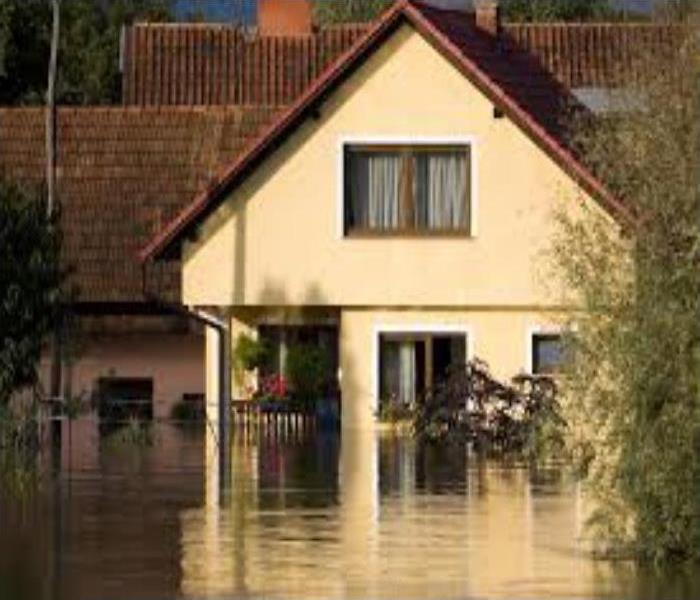
Flooding is a part of the history in Boston and the North Shore areas and you should consider it as a part of your duties as a property owner to plan for these types of situations. Obtaining the proper insurance and budgeting for some of the preventive measures that exist to assist you with preparation for a flood is only the beginning. However, it is far better than merely reacting to a crisis. It is our goal to inform you more about what to do when a water damage emergency hits and help you with getting back to normal, with the least amount of disturbance to your everyday lives.
We have expertly trained technicians who have experience in dealing with flood damage restoration near your home. It is possible that the person who arrives to help you with your situation is someone that you already know within the community that you live, a neighbor, a friend or even a family member.
SERVPRO Franchises are locally owned and operated by people just like you. Our technicians go through rigorous training to learn the proper steps to assist with your recovery as promptly and professionally as possible. However, we can also help you prepare to combat the possibility before it ever occurs, limit the damage caused by flooding and even save more of your belongings in the process.
Our expertly trained technicians at SERVPRO offer you services that are unique to your situation and help you understand what you can expect; even during the worst possible conditions. We will be there to assist you through the entire process, from beginning to end and even provide you with any assistance you need filling out the proper paperwork to deal with your insurance company.
The restoration process at SERVPRO starts with your initial phone call. We will perform an inspection on your property and thoroughly explain what is needed to get you back on your feet. Then we will quickly and efficiently cover the steps of the action plan that we have described to remove any excess water and completely dry everything within the affected area. We can uncover those hard to locate moisture pockets that require specialized equipment to find. All of your household items get handled as if they were our own, and each restorable item is taken care of and returned to a quality pre-damage condition "Like it never even happened."
Our SERVPRO of Lynn/Lynnfield staff is waiting to assist you. 781-593-6663
Hurricane Season is Here - Are You Prepared?
6/4/2018 (Permalink)
Last year’s hurricane season was the most disastrous the United States has ever experienced. Hurricanes in 2017 affected more than 25 million people—close to 8 percent of the U.S. population—and resulted in widespread displacement of survivors. Hurricanes Harvey, Irma, and Maria caused $265 billion in damage, more than the 2005 hurricanes Katrina, Rita, and Wilma combined.
WHAT CAN WE DO TO PREPARE?
With the Atlantic hurricane season beginning in June, individuals and businesses can take proactive steps to better prepare for hurricanes that may threaten our homes, workplaces, and communities. Here are five actions that FEMA recommends everyone take in advance of hurricane season:
- Get alerts and warnings to receive timely information about weather conditions or other emergencies. Download the FEMA App to learn what to do before, during, and after emergencies, and receive weather alerts from the National Weather Service.
- Create and practice a family communication plan. Your family may not be together when a disaster strikes. Know how you’ll contact one another and reconnect if separated, and ensure everyone understands their role.
- Document and insure property before a disaster strikes to ensure you will have the necessary financial resources to help you repair, rebuild, or replace whatever is damaged. Visit gov to learn about purchasing flood insurance.
- Strengthen your financial preparedness. Collect and secure personal financial, insurance, medical, and other records to give yourself the peace of mind and ensure that you have the documentation needed to start the recovery process without delay.
- Get trained. Every minute is important in a disaster, and if emergency responders are not nearby, you could be the one to help others until help arrives. Consider participating in a local or regional exercise—or even develop an exercise or simulation for your organization or community to help identify challenges and correct issues before they happen. Visit gov/until-help-arrives for online training and to find out what role you can take during disasters.
DISASTER PREPAREDNESS FOR OUR FURRY FRIENDS
9/15/2017 (Permalink)
Emergencies come in many forms, and they may require anything from a brief absence from your home to permanent evacuation. Each type of disaster requires different measures to keep your pets safe, so the best thing you can do for yourself and your pets is to be prepared. Here are simple steps you can follow now to make sure you’re ready before the next disaster strikes:
Step 1: Get a Rescue Alert Sticker
This easy-to-use sticker will let people know that pets are inside your home. Make sure it is visible to rescue workers (we recommend placing it on or near your front door), and that it includes the types and number of pets in your home as well as the name and number of your veterinarian. If you must evacuate with your pets, and if time allows, write “EVACUATED” across the stickers. To get a free emergency pet alert sticker for your home, please fill out our online order form and allow 6-8 weeks for delivery.
Step 2: Arrange a Safe Haven
Arrange a safe haven for your pets in the event of evacuation. DO NOT LEAVE YOUR PETS BEHIND. Remember, if it isn’t safe for you, it isn’t safe for your pets. They may become trapped or escape and be exposed to numerous life-threatening hazards. Note that not all shelters accept pets, so it is imperative that you have determined where you will bring your pets ahead of time:
- Contact your veterinarian for a list of preferred boarding kennels and facilities.
- Ask your local animal shelter if they provide emergency shelter or foster care for pets.
- Identify hotels or motels outside of your immediate area that accept pets.
- Ask friends and relatives outside your immediate area if they would be willing to take in your pet.
Step 3: Choose "Designated Caregivers”
This step will take considerable time and thought. When choosing a temporary caregiver, consider someone who lives close to your residence. He or she should be someone who is generally home during the day while you are at work or has easy access to your home. A set of keys should be given to this trusted individual. This may work well with neighbors who have pets of their own—you may even swap responsibilities, depending upon who has accessibility.
When selecting a permanent caregiver, you’ll need to consider other criteria. This is a person to whom you are entrusting the care of your pet in the event that something should happen to you. When selecting this “foster parent,” consider people who have met your pet and have successful cared for animals in the past. Be sure to discuss your expectations at length with a permanent caregiver, so he or she understands the responsibility of caring for your pet.
Step 4: Prepare Emergency Supplies and Traveling Kits
If you must evacuate your home in a crisis, plan for the worst-case scenario. Even if you think you may be gone for only a day, assume that you may not be allowed to return for several weeks. When recommendations for evacuation have been announced, follow the instructions of local and state officials. To minimize evacuation time, take these simple steps:
- Make sure all pets wear collars and tags with up-to-date identification information. Your pet’s ID tag should contain his name, telephone number and any urgent medical needs. Be sure to also write your pet’s name, your name and contact information on your pet’s carrier.
- The ASPCA recommends microchipping your pet as a more permanent form of identification. A microchip is implanted under the skin in the animal’s shoulder area, and can be read by a scanner at most animal shelters.
- Always bring pets indoors at the first sign or warning of a storm or disaster. Pets can become disoriented and wander away from home in a crisis.
- Store an emergency kit and leashes as close to an exit as possible. Make sure that everyone in the family knows where it is, and that it clearly labeled and easy to carry. Items to consider keeping in or near your “Evac-Pack” include:
- Pet first-aid kit and guide book (ask your vet what to include)
- 3-7 days’ worth of canned (pop-top) or dry food (be sure to rotate every two months)
- Disposable litter trays (aluminum roasting pans are perfect)
- Litter or paper toweling
- Liquid dish soap and disinfectant
- Disposable garbage bags for clean-up
- Pet feeding dishes and water bowls
- Extra collar or harness as well as an extra leash
- Photocopies and/or USB of medical records and a waterproof container with a two-week supply of any medicine your pet requires (Remember, food and medications need to be rotated out of your emergency kit—otherwise they may go bad or become useless)
- At least seven days’ worth of bottled water for each person and pet (store in a cool, dry place and replace every two months)
- A traveling bag, crate or sturdy carrier, ideally one for each pet
- Flashlight
- Blanket
- Recent photos of your pets (in case you are separated and need to make “Lost” posters)
- Especially for cats: Pillowcase, toys, scoop-able litter
- Especially for dogs: Extra leash, toys and chew toys, a week’s worth of cage liner
You should also have an emergency kit for the human members of the family. Items to include: Batteries, duct tape, flashlight, radio, multi-tool, tarp, rope, permanent marker, spray paint, baby wipes, protective clothing and footwear, extra cash, rescue whistle, important phone numbers, extra medication and copies of medical and insurance information.
Step 5: Keep the ASPCA On-Hand at All Times
Help protect pets by spreading the word about disaster preparedness. Download, print and share FEMA’s brochure today.
The free ASPCA mobile app shows pet parents exactly what to do in case of a natural disaster. It also allows pet owners to store vital medical records and provides information on making life-saving decisions during natural disasters.
Hurricane Preparedness Week – May 7-13, 2017
5/9/2017 (Permalink)
Sunday, May 7th
Determine Your Risk
Find out today what types of wind and water hazards could happen where you live, and then start preparing now for how to handle them. Hurricanes are not just a coastal problem. Their impacts can be felt hundreds of miles inland. It’s easy to forget what a hurricane is capable of doing. The U.S. has not been directly impacted by a major hurricane (Category 3 or higher) in more than a decade. However, hurricanes such as Ike, Sandy and Isaac reminded us that significant impacts can occur without it being a major hurricane. Many people are suffering from hurricane amnesia in the forms of complacency, denial and inexperience. This remarkable hurricane streak is going to end, and we have to be ready for it to happen this season.
Monday, May 8th
Develop an Evacuation Plan
The first thing you need to do is find out if you live in a storm surge hurricane evacuation zone or if you’re in a home that would be unsafe during a hurricane. If you are, figure out where you’d go and how you’d get there if told to evacuate. You do not need to travel hundreds of miles. Identify someone, perhaps a friend or relative who doesn’t live in a zone or unsafe home, and work it out with them to use their home as your evacuation destination. Be sure to account for your pets, as most local shelters do not permit them. Put the plan in writing for you and those you care about.
Tuesday, May 9th
Assemble Disaster Supplies
You’re going to need supplies not just to get through the storm but for the potentially lengthy and unpleasant aftermath. Have enough non-perishable food, water and medicine to last each person in your family a minimum of one week. Electricity and water could be out for at least that long. You’ll need extra cash, a battery-powered radio and flashlights. Many of us have cell phones, and they all run on batteries. You’re going to need a portable, crank or solar powered USB charger.
Wednesday, May 10th
Secure an Insurance Check-up
Call your insurance company or agent and ask for an insurance check-up to make sure you have enough homeowners insurance to repair or even replace your home. Don’t forget coverage for your car or boat. Remember, standard homeowners insurance doesn’t cover flooding. Whether you’re a homeowner or renter, you’ll need a separate policy for it, and it’s available through your company, agent or the National Flood Insurance Program at www.floodsmart.gov. Act now as flood insurance requires a 30-day waiting period.
Thursday, May 11th
Strengthen Your Home
If you plan to ride out the storm in your home, make sure it is in good repair and up to local hurricane building code specifications. Many of these retrofits do not cost much or take as long to do as you may think. Have the proper plywood, steel or aluminum panels to board up the windows and doors. Remember, the garage door is the most vulnerable part of the home, so it must be able to withstand the winds.
Friday, May 12th
Check on Your Neighbor
Many Americans rely on their neighbors after a disaster, but there are also many ways you can help your neighbors before a hurricane approaches. Learn about all the different actions you and your neighbors can take to prepare and recover from the hazards associated with hurricanes. Start the conversation now with these Neighbor Helping Neighbor strategies
Saturday, May 13th
Complete Your Written Hurricane Plan
The time to prepare for a hurricane is before the season begins, when you have the time and are not under pressure. If you wait until a hurricane is on your doorstep, the odds are that you will be under duress and will make the wrong decisions. Take the time now to write down your hurricane plan. Know where you will ride out the storm and get your supplies now. You don’t want to be standing in long lines when a hurricane warning is issued. Those supplies that you need will probably be sold out by the time you reach the front of the line. Being prepared, before a hurricane threatens, makes you resilient to the hurricane impacts of wind and water. It will mean the difference between your being a hurricane victim and a hurricane survivor.
 As a locally owned and operated franchise, SERVPRO is deeply committed to supporting our community in times of crisis
As a locally owned and operated franchise, SERVPRO is deeply committed to supporting our community in times of crisis





 24/7 Emergency Service
24/7 Emergency Service

























